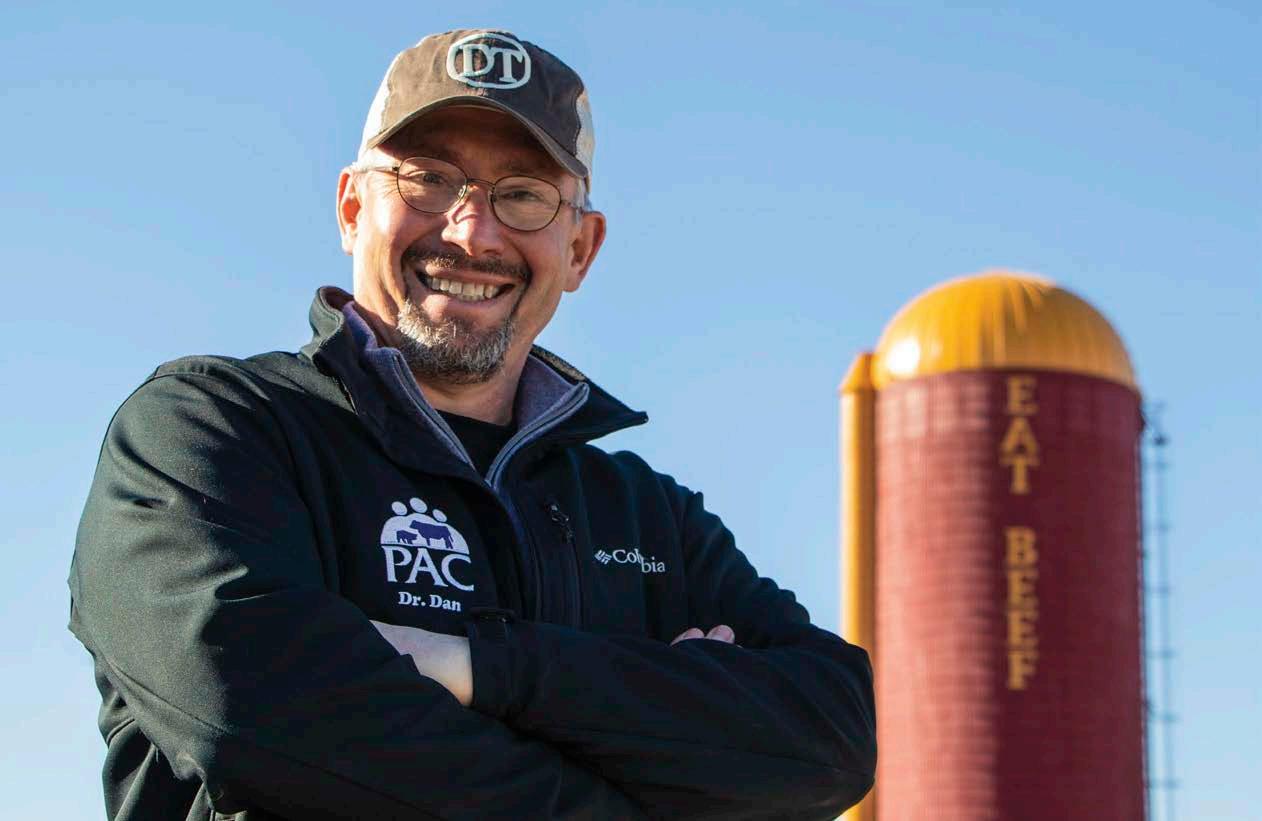PROTEI N TM pro d ucers

SUMMER 2024


SUMMER 2024
Vaxxinova takes the guesswork out of finding solutions for your complex herd health issues. Our advanced diagnostics allow us to see the exact issues hiding in your herd so we can create a customized vaccine or recommend the appropriate combination of commercial vaccines.
Talk to your Vaxxinova Representative or visit www.vaxxinova.us.com to learn more.
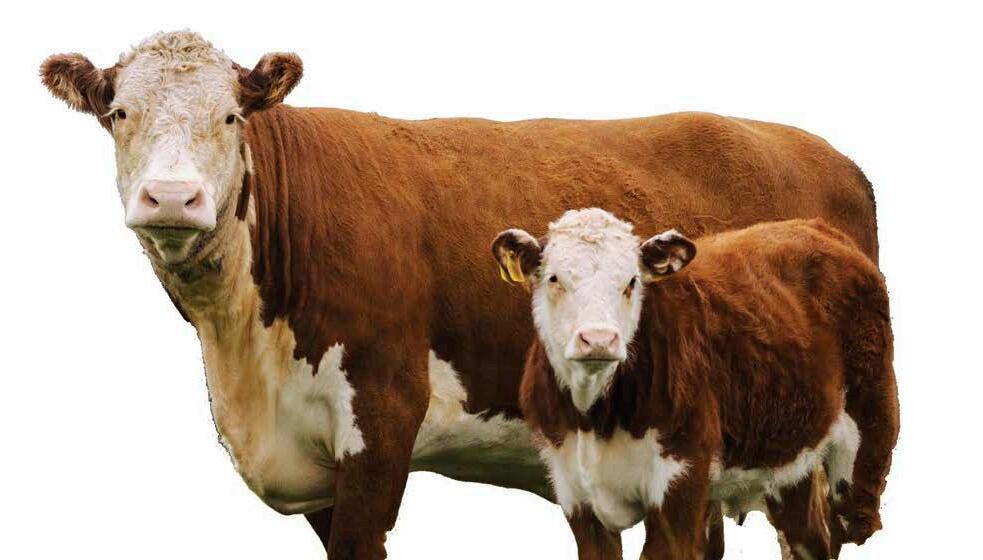


2024 Volume 13 Issue 2
Thank you to all sponsors for supporting PAC & Protein Producers
Animal Health International
Axiota Animal Health
Bimeda
TM
Boehringer Ingelheim Animal Health USA
Daniels Manufacturing Co.
Heinen Pasture Management
Huvepharma
Idexx
Kemin Animal Nutrition & Health – North America
Lallemand Animal Nutrition
MicroTechnologies
Solvet
United Patriot Supply
Vaxxinova, US/Newport Laboratories
Zinpro
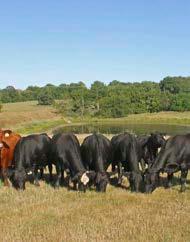
FRONT COVER PHOTO CREDIT
Thank you to Farming Unlimited for the photo from northeast Kansas.
EDITORIAL TEAM & PRODUCTION TEAM
Brandi Bain
Karla Jennings
Keli Huddleston
Heather Newell
Lexi Studebaker
Lisa Taylor


We want to showcase unique photographs from our readers here!
Please submit your photographs to protein producers @ pacdvms.com
Welcome to the latest issue of Protein Producers
We are excited to bring you a unique publication highlighting PAC members and interesting topics. As summer approaches, production planning will need to address warmer days and the challenges that changing seasons can create in operations.
As veterinarians, we are often asked to help producers prepare for seasonal changes and the potential for extreme temperatures. Many operations experienced the toughest weather conditions in a decade during late December 2023 and early January 2024. To help prevent extraordinary weather from creating stress and chaos, we strive to help producers experience “homeostasis,” or the self-regulating process by which animals tend to maintain stability by adjusting to conditions that are best for their survival. If homeostasis is successful, morbidity and disease remain low, reducing the likelihood of experiencing elevated loss during stressful periods. This stability is rarely measured by an exact point but by maintaining an appropriate range of variables, resulting in a safe, disease-reduced equilibrium. We routinely recommend timely deworming and vaccinations, accurate disease detection, bedding, additional water, long-stem hay, and exercise as effective tools to develop or maintain a low disease status.

In late March 2024, the dairy industry experienced a new biosecurity challenge with the discovery of Highly Pathogenic Avian Influenza (HPAI) virus. This discovery brought to light the importance of having a robust biosecurity plan in place. Good biosecurity practices cannot guarantee new viruses or bacteria will not create disease, but it will help ensure operations are doing all they can to protect their herds and the people who take care of their livestock. PAC veterinarians routinely collaborate with producers in developing and maintaining their biosecurity plans by teaching basic concepts of husbandry, stockmanship, anatomy and physiology, immunology, and epidemiology. Our goal is to help producers remove variation within their populations and eliminate obstacles, so they become routinely successful with good biosecurity.
The PAC team held Beef Summits in Scott City, Kansas, and Kearney, Nebraska, in April 2024, highlighting current research and launching new programs to help operations manage their cattle. We are excited to provide novel surveillance tools, including a diagnostic program called Certified Sampler to train feedyard team members to collect samples, helping producers and their veterinarians be on the forefront of health. Disease surveillance will also be enhanced utilizing Heads Up, a new data tool that combines data and satellite imagery to help monitor disease prevalence and performance at the pen level. Additionally, producers will have access to a platform called Yardstick that will summarize their monthly closeout data for health parameters organized by weight and sex and compare them to other feedyards in the same geographic region and other feedyards of similar size.
In this issue of Protein Producers, we will bring you information in the feedlot section about managing cattle in warm weather and outline best practices for hospital management. In the cow-calf section, there will be information about how to safely expand the cowherd and an article on the all-important topic of reproductive technology. We will also address supplementing stocker calves in the summertime, and Dr. Nels Lindberg will provide excellent information on fundamentals of transitions in leadership.
Thanks for reading this issue of Protein Producers. We hope you enjoy reading it as much as we enjoy providing it to all of you. Have a safe and successful summer.
Corbin Stevens, DVM Production Animal ConsultationScott City, Kansas
We want to thank the industry partners, publications and associations who have provided content to Protein Producers. Also, a big thank you to our readers for supporting us, offering content and helping us improve each issue. We could not do any of this without all of you!
Disclaimer: The views, opinions and information expressed in this magazine are those of the authors and do not necessarily reflect Production Animal Consultation’s policy or position.

Clostridium perfringens
CLOSTAT® is a unique, naturally occurring active microbial containing Bacillus subtilis PB6. The PB6 in CLOSTAT effectively targets and disrupts Clostridium perfringens, Salmonella and Escherichia coli. With known modes of action — and the research to back it up — CLOSTAT is the active microbial of choice to support gut health in cattle.
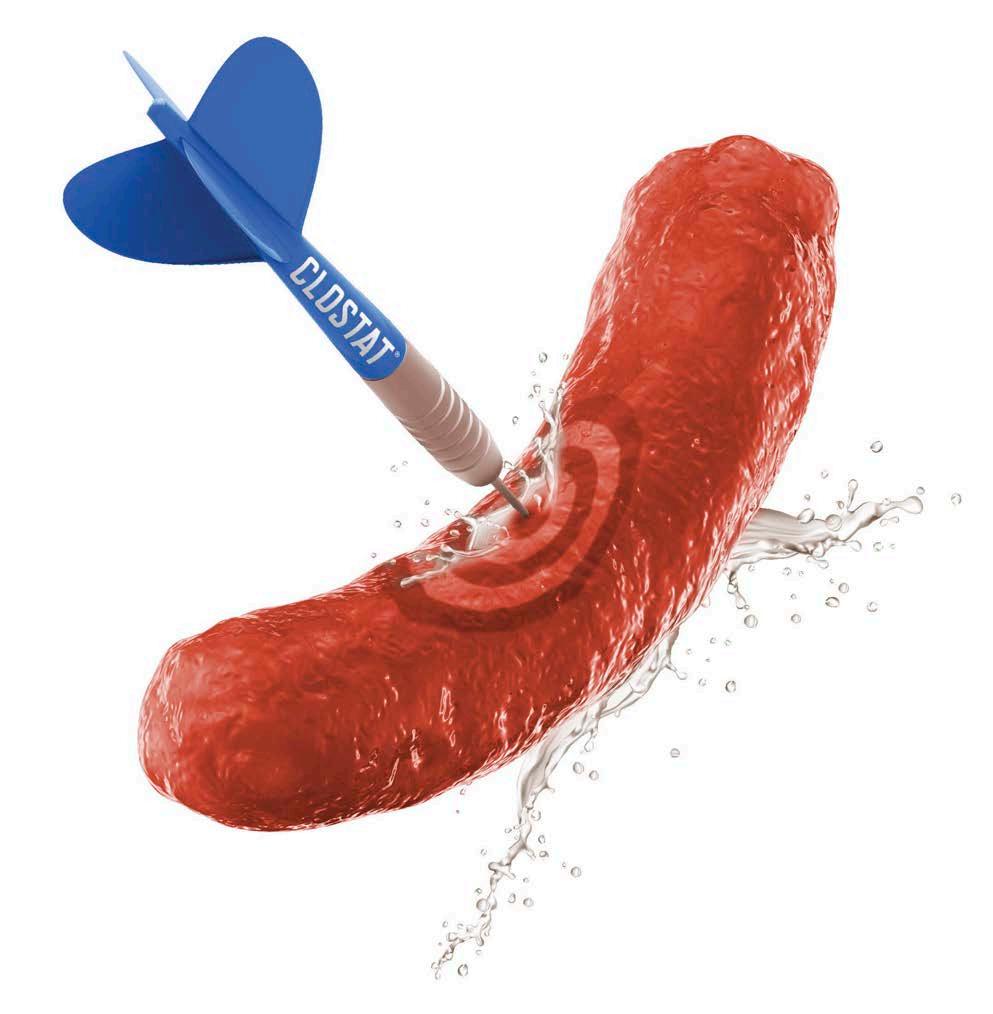
Take aim today with CLOSTAT. kemin.com/clostat-beef

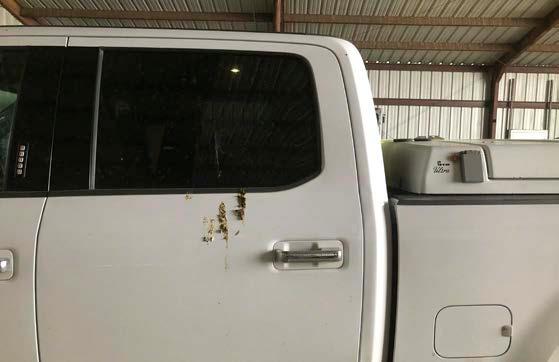
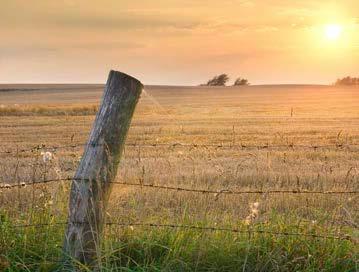
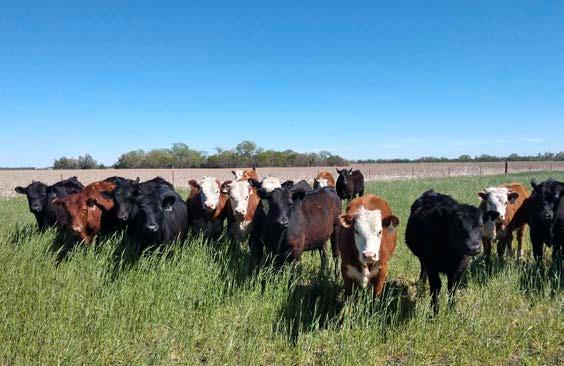

Calving season has passed for most of us, and as we turn the pages of this magazine, reminiscing on the challenges and triumphs, let’s delve into the narrative of caregiving on the ranch.
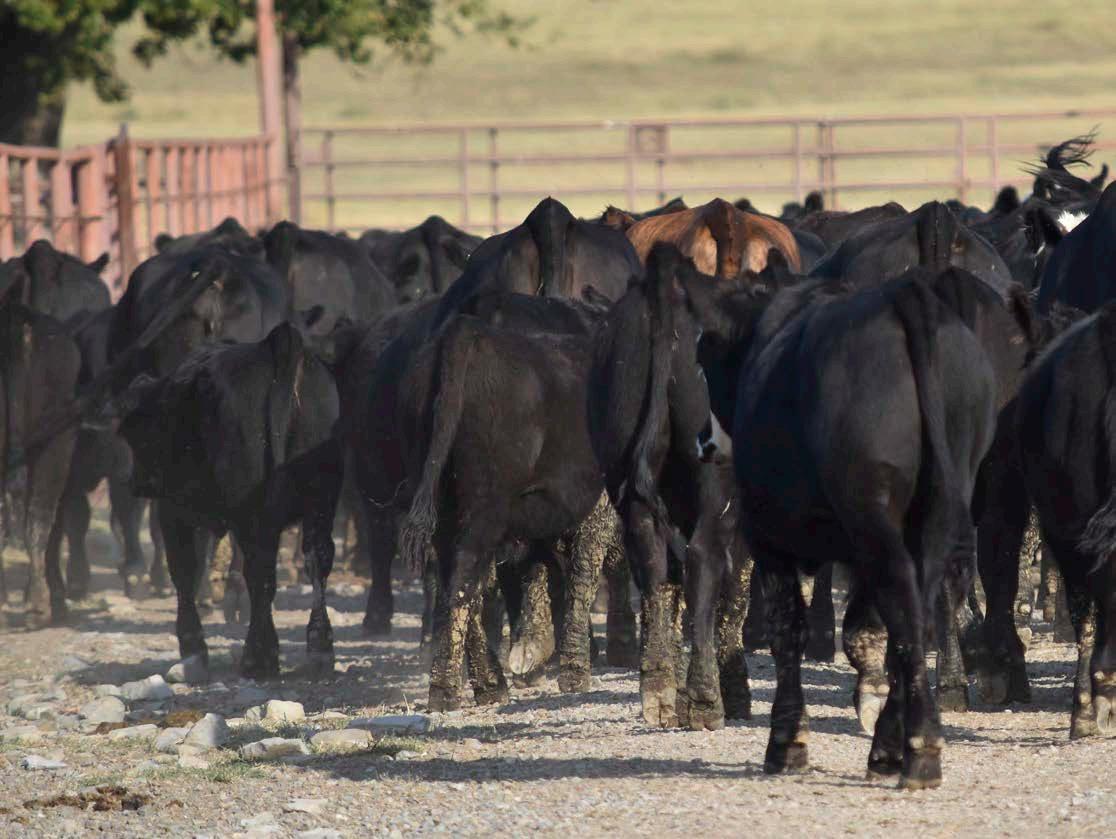
In our previous issue, the words of Dr. Tom Noffsinger and Lucy Morrisey echoed through the fields, emphasizing the profound impact caregivers have on the health, performance, and overall wellbeing of our cattle. They spoke of the significance of positive interactions, of building trust, and the enduring impressions left on our animals with every handling event.
As a veterinarian deeply invested in this way of life, I am fortunate to collaborate with many dedicated individuals in our industry. Recently, during one of my training sessions, a caregiver posed a poignant question: Do cows remember negative interactions? My response was unequivocal: Yes, they do, but they also possess an incredible capacity for forgiveness when met with corrected actions.
Working with cows and their calves, from conception to consumption, is a privilege that grants insight into the profound impact of caregiving. It begins even before birth, with each handling event shaping the journey to calving season. Positive interactions have the power to influence the fetus early on, setting the tone for future interactions.
When it comes to the crucial moments of tagging, vaccinating, or simply moving a calf, the approach matters. Should one start with the calf or the cow?
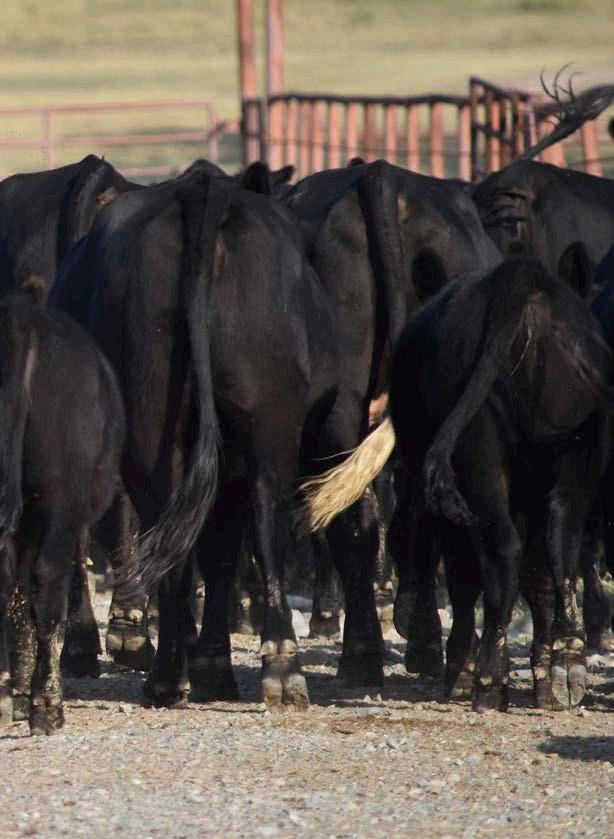
Personally, I prefer to acknowledge the cow first, establishing a sense of comfort for both her and her calf. By respecting her space and demeanor, she willingly allows necessary procedures, a testament to the trust built through positive interactions.
Simple gestures, such as ensuring the cow and calf comfortably walk away together after a procedure, lay the groundwork for future engagements. Every day presents an opportunity for training – teaching cows to pair, nurturing maternal instincts, and acclimating them to human presence.
Just as Dr. Tom and Lucy advocated, these interactions shape not only behavior but also the quality of our relationships with our animals. Cattle remember each encounter, reinforcing the importance of fostering positive experiences or valuable learning opportunities.
In the serene rhythm of daily ranch life, every interaction contributes to the collective narrative of caregiving. From encouraging pairs to suckle during checks to gracefully maneuvering them through gates, each action reinforces the bond between cow and calf.
As we navigate sorting days and pasture rotations, the goal remains steadfast: to nurture strong cow-calf pairs primed for the next phase of their journey. And as we embark on this path, let us heed the wisdom passed down through generations: “Crazy people make crazy cows.” Indeed, positive interactions yield excellent responses, a testament to the profound impact of attitude and presence in our daily interactions. For on the ranch, where words may fade, the language of care spoken through our actions resonates deeply with our beloved bovine companions.

Dr. Kip Lukasiewicz received his Doctor of Veterinary Medicine degree in 1999 from Kansas State University. He is the owner of Sandhills Cattle Consultants, Inc. and a partner with Production Animal Consultation, LLC. Dr. Kip’s primary focus is feedlot consulting, animal handling, and facility design. Dr. Kip trained under the late Bud Williams and has worked and trained extensively with Dr. Tom Noffsinger utilizing Bud’s thoughts on low-stress cattle handling and caregiving. Dr. Kip along with Dr. Tom works and trains with over 20% of the US fed cattle industry and also travels to Canada training feedlot clients on low-stress cattle handling and caregiving. Dr. Kip resides in Farwell, Nebraska, with his wife, and they have two children. He is an active member of the Academy of Veterinary Consultants, Nebraska Veterinary Medical Association, and American Association of Bovine Practitioners.
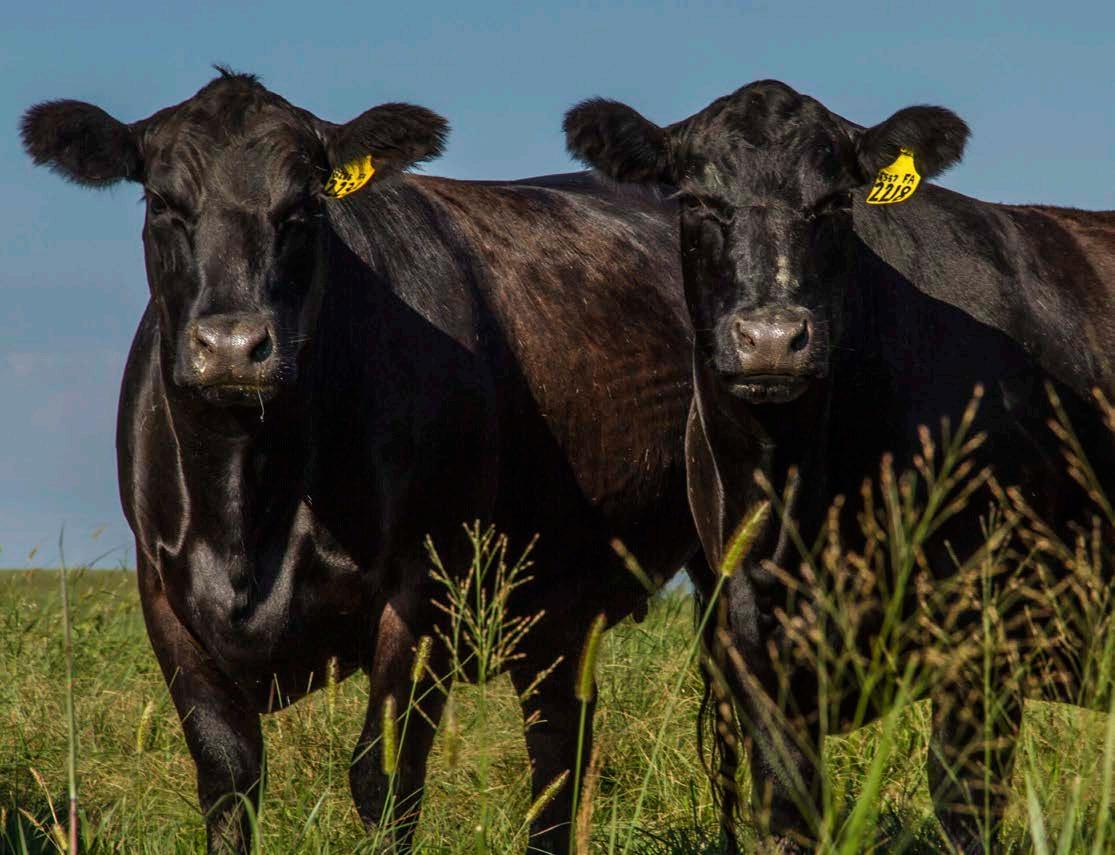
If the current number of cattle in your operation is at a low point due to drought, high input prices, high interest rates, loss of pasture, loss of labor, etc., you may be looking to rebuild in the coming years. If that is the case, then this is a critical time to consider the best possible path forward for yourself and your operation. It is worth the time to study, plan, and seek guidance on what strategy will best help you reach your goals. This article will highlight a few factors to ponder before expanding your herd.
There are three diseases that are not talked about very frequently but may be worth considering when the herd census is low. They may or may not be present in your herd, but if there, can cause ongoing headaches that worsen over time if left unattended. These three are: Bovine Viral Diarrhea Virus (BVDV), Bovine Leukosis Virus (BLV), and Johne’s disease.
Currently having low numbers of females in the herd provides an opportune time to address these disease issues because lab testing costs will be lower. Also, if you have culled heavily, you may have unknowingly gotten rid of most of the cows carrying these diseases already, and becoming diseasefree may be easier. Once you know the status of your core herd, you can re-stock with new females (raised or purchased) that are disease-free as well.
Bovine Viral Diarrhea Virus, even though “diarrhea” is in the name, typically causes pregnancy loss or immune system suppression leading to respiratory disease as the main clinical signs in beef cattle. If it is present, it can cause the “PI” condition you may have heard about. This occurs when a cow pregnant between approximately one to four months of gestation gets infected. The developing calf’s immune system then develops without ever being able to fi ght or clear the infection. When the calf is born, it is termed “persistently infected” or a “PI calf”, and these calves will shed large quantities of the virus for life. Many of these PI calves don’t reach adulthood, but some do and can affect numerous other animals by continuously shedding the virus into the environment. Making sure there are no PI animals in your current herd and then testing additions to the herd is a good foundation. Also, maintaining immunity through vaccination will significantly reduce the risk if a PI
animal exposes your cattle (such as a neighboring bull jumping into your pasture), that PI calves will be generated. The typical samples for testing are ear notches, and they are often tested in batches (pooled) to save on laboratory costs.
Side note - raising bucket calves born at feedlots is a significant risk of BVD introduction to a cowherd. There is a high risk that these calves are persistently infected. If you raise these types of calves, get them tested, and keep the main cowherd separate from them. Also, observe the biosecurity precautions that your veterinarian recommends.
Bovine Leukosis Virus (BLV) is a virus that causes lymphoma (a type of cancer that usually shows up first in lymph nodes) in about 5% of infected individuals. It also causes measurable unwanted changes in the immune system in numerous infected individuals (called lymphocytosis). Around twothirds of infected cattle appear to live normal lives, but around one-third are high shedders of the virus (have a high proviral load). These high-shedding cattle spread the virus to others more easily. Also, there is evidence that they are culled from the herd at a higher rate. In other words, they just don’t last as long due to immune system dysfunction. Additionally, of beef cull cow and bull carcasses condemned at slaughter, about 13% are condemned for lymphoma. This is a steady trickle of fi nancial loss to beef operations that can be stopped with some careful, steady effort over time.
Johne’s disease is another incurable lifelong infection that causes gradually worsening diarrhea and weight loss in older cattle. It is caused by the bacteria Mycobacterium avium subspecies paratuberculosis . It is typically thought of as a dairy cattle disease but has been found more frequently in beef cattle in recent years.
Bovine Leukosis Virus and Johne’s disease are

both diseases that typically spread relatively slowly from animal to animal. Positive (infected) animals often live for several years of near-normal life. Neither disease is associated with outbreaks or sudden, catastrophic financial losses directly due to the disease. The problem with these diseases is that if left alone, they tend to gradually spread. It is believed that about 8% of beef cattle are currently infected with Johne’s disease. Currently, about 33% of beef cows are positive for BLV. This is up significantly from around 20 years ago, when about 10% were positive. About 44% of beef bulls in a recent study were positive. It would be wise to prevent these situations from worsening.
positives, or many positives. The ticket to getting rid of these conditions is consistent effort over time. Your herd veterinarian is in the best position to help you assess the utility of pursuing this. He or she is also best positioned to help you in planning and executing a strategy that fits your operation.
Another consideration during herd expansion is financial safety. We are currently in a time of high cattle prices and strong fundamentals, suggesting that high prices for the next few years are likely. These are the types of economic conditions in which a few, often young, entrepreneurial cattle
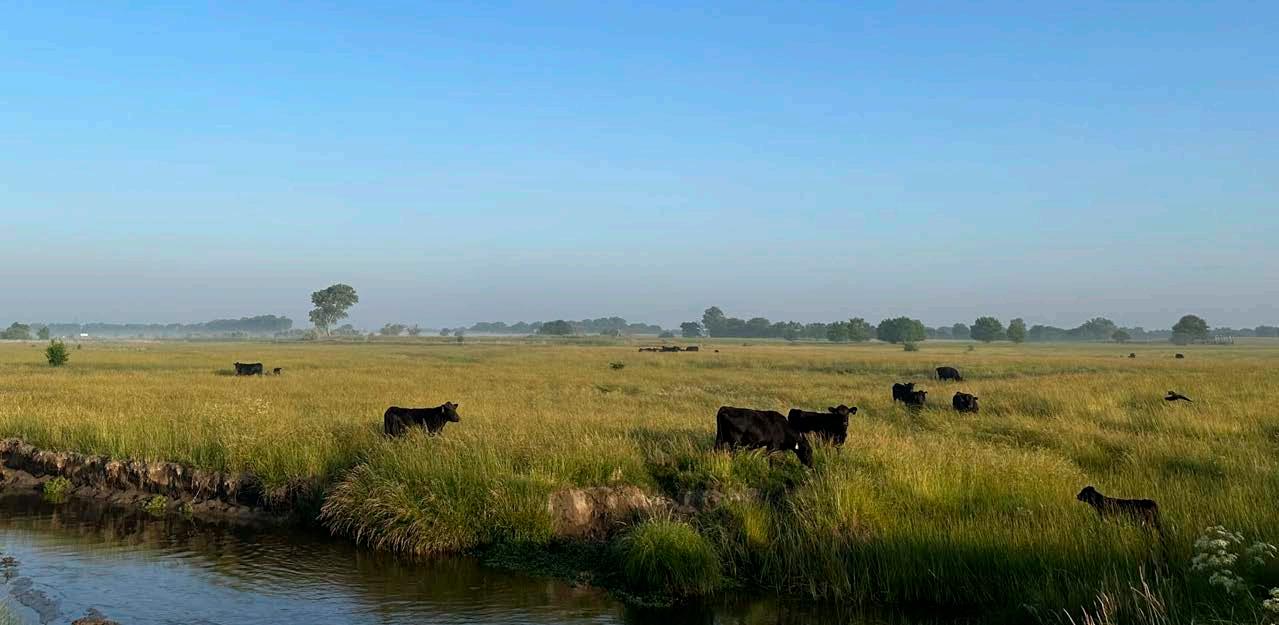
Your herd veterinarian can discuss these further with you and help you design a testing strategy that fits your goals. Eradicating each disease from your herd may present numerous challenges and will take serious thought and planning. In fact, pursuing eradication of these diseases may not be right for every operation. For example, if you have had a closed herd for many years and are not seeing signs of any of these, spending money on testing may not currently be the best use of resources for you. In seedstock herds, however, being able to give evidence of freedom of these diseases may be a significant help to the business model over time. The aggressiveness with which you pursue testing and clearance will vary depending on region, goals, and whether you have zero positives, a few
producers might go deeply in debt to purchase an exceptional cowherd with the right genetics, just in time for prices to sink. Producers in this situation can be financially crippled. In other words, cowherd expansion through the purchase of breeding stock with borrowed money could result in putting yourself and your family into a serious financial struggle for years to come.
My recommendation would be to eliminate or at least minimize debt on the cowherd. Cows are historically a low return-on-investment enterprise. Don’t be afraid to start small and grow slowly. If prices stay high and economic times stay good, but you weren’t highly leveraged (deeply in debt), you may not make as much money as you could have. But if prices sink and harder economic
times come, you’ll have protected yourself and your family from the type of financial hardship that results from economic downturn and excessive debt. These circumstances can sometimes lead to feelings of hopelessness and even suicidal thoughts.
Conclusion
My hope is that the topics discussed above will shed a little light on ways to safely expand your cowherd, from both an animal health and a financial perspective.
Sources available upon request.

Dr. Halden Clark grew up on a farm just east of Greeley, CO. He graduated from veterinary school at Colorado State University and has spent time in dairy, cow-calf, and feedlot practice as well as beef food safety prior to joining the faculty at UNL-Great Plains Veterinary Educational Center five years ago. He primarily works with senior-year veterinary students in week-long courses (called clinical rotations) focused on calving, ultrasound pregnancy diagnosis, and clinical veterinary care of cattle. He and his family also enjoy spending time on several cattlerelated projects on the side. He can be reached at hclark16@unl.edu.
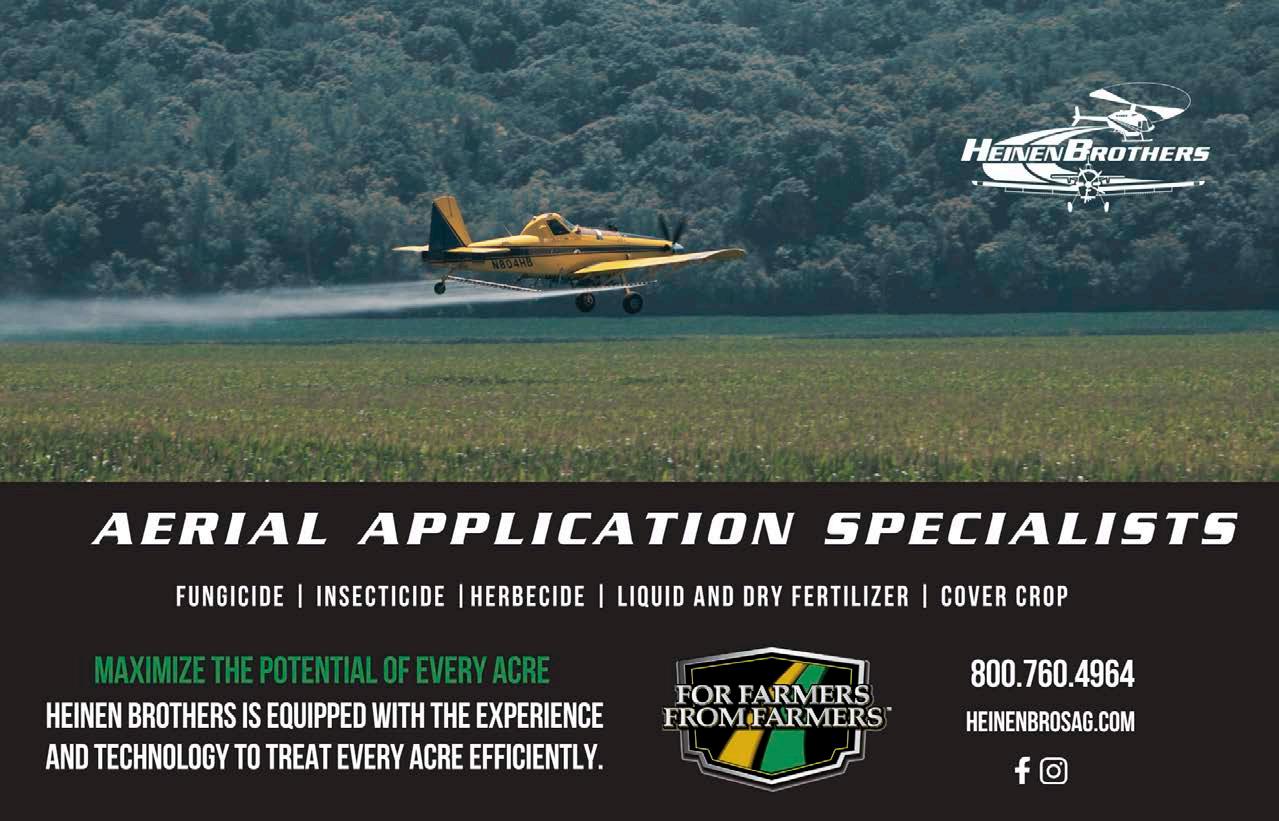


At times, weather, politics, and other factors outside our control can be frustrating to the livestock industry. However, despite all that, the future has never been brighter for what cow-calf producers can accomplish with reproductive technology tools now available. The most powerful reason to use artificial insemination (AI in my world) is the cost-effective access to a wide range of genetic choices with high accuracy. And now, genetic selection tools have been improved with genomic data, EPDs are increasingly available for functional traits as well as growth and carcass traits, and breed associations have created several selection indexes to help simplify the process of selecting for multiple traits. A step up from weaning and yearling ratios of my childhood. Sexedsemen is readily available and the genetic options far exceed the handful of bulls initially offered. Seedstock producers can generate embryos in vivo and in vitro with the end result of increasing the genetic reach of superior females. Cowcalf producers that want to move beyond commodity marketing have options to tie their production to a supply chain via genetics and/or management. At the backbone of all these things are estrus synchronization and AI. National Animal Health Monitory Surveys indicate that AI and estrus synchronization use is higher in heifers than cows and in herds with 200 head or more. This is not surprising for several reasons. Use of high accuracy calving ease sires minimizes risk of calving difficulty while still allowing for good growth rates. Given ever-rising input costs, anything that can be done to reduce risk and improve returns associated with first-calf heifers is beneficial to the bottom line.
We still refer to it as synchronization of estrus, but today’s systems synchronize ovulation and control both the presence of corpora lutea (CL) and follicular waves allowing fixed-time AI, so that an entire group of females can be inseminated on the first day of the breeding season. This translates to an added advantage that females could have 3 chances to conceive by 45-50 days of the breeding season. Cows that calve early in the breeding season one year have more time to resume cycling before the start of the next breeding season compared to later calving cows. Depending on the initial calving distribution, gradual improvements in AI pregnancy rates are often seen over several years of estrus synchronization use, as more and more cows are calving early and have ample time to resume cycling before the start of the breeding season. Benefits of synchronization for the cow also apply to the calves that are older and heavier at weaning and tend to be more uniform in size.
The Beef Reproduction Task Force, a multi-state extension group, along with a larger group of allied industry personnel known as the Beef Reproduction Leadership Team, have worked together to provide a uniform set of recommended protocols for synchronization of estrus and ovulation. These recommendations reflect available research and knowledge of how these systems work in a wide
variety of settings. There are many protocols that have been evaluated, but the BRTF list is intended to direct producers to a short list that minimizes animal handlings and deliver consistent results.
There are different protocols and timing recommendations for cows and yearling heifers. Insemination timing is earlier for heifers than cows, for some shared protocols, and heifers are less consistent in their response to GnRH treatments. Current protocol recommendations can be found at beefrepro.org/protocols/ and are grouped as follows:
• Cows – Heat Detection and Timed AI
• Cows – Fixed-Time AI
• Heifers – Heat Detection and Timed AI
• Heifers – Fixed-Time AI
• Sexed Semen
• Heat Detection
• Natural Service
Some of the systems for use with heifers start a month prior to the planned breeding date. These systems work very well but do require more advanced planning. The Estrus Synchronization Planner is a free tool found at BeefRepro.org/resources that will develop a calendar to ensure users know what should be done and when on each day of a protocol. For fixed-time AI systems, the timing in hours between the last prostaglandin injection and timed
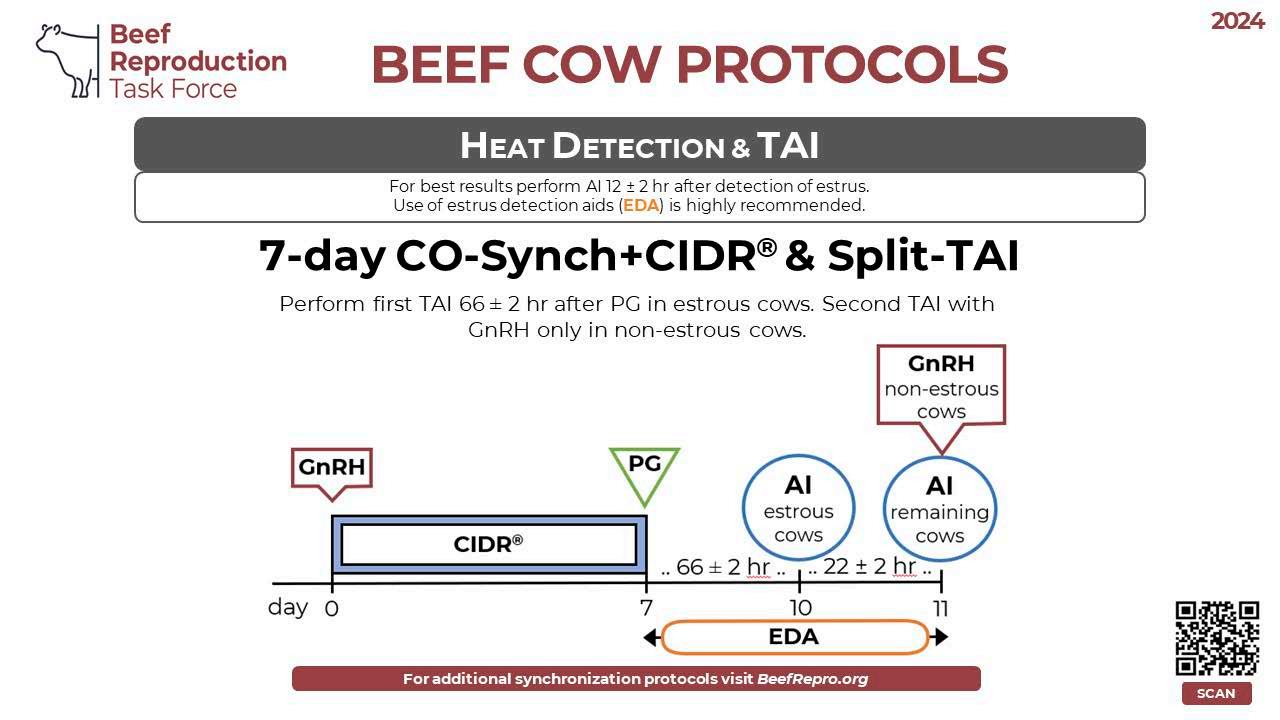 Figure 1. 7-Day CO-Synch+CIDR and Split Time AI Protocol for cows
Figure 1. 7-Day CO-Synch+CIDR and Split Time AI Protocol for cows
AI are important and the Planner will show you if your inputs result in timed-AI at 2 AM rather than 2 PM.
Deciding on which protocol to use involves several decisions by the manager. If the primary goal is to use AI sires with little emphasis on reducing the days devoted to heat detection, something from the heat detection list is the way to go. Results are highly dependent on diligent heat detection. A more common approach is to heat detect for a few days and then at the end of a pre-determined time, AI all remaining females and administer GnRH. This approach spreads out inseminations which is appropriate for individuals that don’t routinely do a lot of palpation or AI and may get arm fatigue before the supply of cows in estrus runs out. An approach used by experienced technicians and when hiring AI service is a single fixed-time AI. All cows/heifers are inseminated at a pre-planned time.
Heat detection and the AM/PM rule can be used with any of the synchronization protocols. Split-time AI adds one more planned AI time compared to fixed-time AI. Using the 7-Day COSynch +CIDR in cows as an example of split-time AI, at 66 hours after PG, all cows in heat at that time are inseminated and 20-24 hours later the remaining cows are inseminated (See Figure 1). Any females that have not shown estrus by that point receive GnRH at the time of insemination. Use of some type of heat detection aid with splittime AI or other protocols involving heat detection is relatively inexpensive and a good investment that makes split-time AI much easier.
Results with sexed-semen are improving but still do not match conventional semen in most cases. Using sexed-semen on females known to be in heat is highly recommended. A split-time
AI approach is a good way to incorporate sexed semen by using sexed semen on females that are in heat and conventional semen and GnRH on non- responders.
Producers can get the benefits of synchronization and still use natural service sires. In many cases, a bull to cow ratio of 1:20 to 1:25 with experienced, fertility tested bulls 2 years of age or older will provide adequate bull power. This approach could be step one in starting an AI program.
Routinely, people are looking for a tweak or change in an estrus synchronization protocol to improve their results to AI. However, the single most important step to successful reproduction is sound year-round nutrition and feeding based on actual cow weights. Either too little or too much can have negative consequences on performance and profitability. Target cows to be in a body condition score of 5 and first calf heifers 5.5 to 6 at calving. Both groups should be on an increasing plane of nutrition going into the breeding season. Protein and energy are major drivers to reproductive performance and should not be overlooked for the miracle supplement promising to solve all problems.
It is doubtful that AI use in the beef industry will ever be as extensive as that of the dairy industry. However, those that elect to incorporate reproductive technology will have quicker access to high value genetics and will be able to shift genetic directions easier based on market demand signals. In the future, consumers may continue to demand premium choice and prime cuts of meat plus something innovation has yet to identify. Reproductive technology will be the gateway to incorporating that new innovation in your cow herd.
Dr. Sandy Johnson, a reproductive physiologist and extension beef specialist at the NW Research and Extension Center in Colby, KS, for K-State Research and Extension, was raised on a diversified livestock operation in eastern Nebraska. She received advanced degrees in Reproductive Physiology from the University of Missouri and West Virginia University. Johnson is a founding member of the Beef Reproduction Task Force, collaborating with allied industries to establish unified guidelines for estrus synchronization protocols. Major outreach efforts are the Applied Reproductive Strategies in Beef Cattle annual meeting and the BeefRepro.org website.
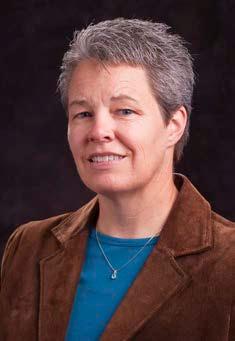
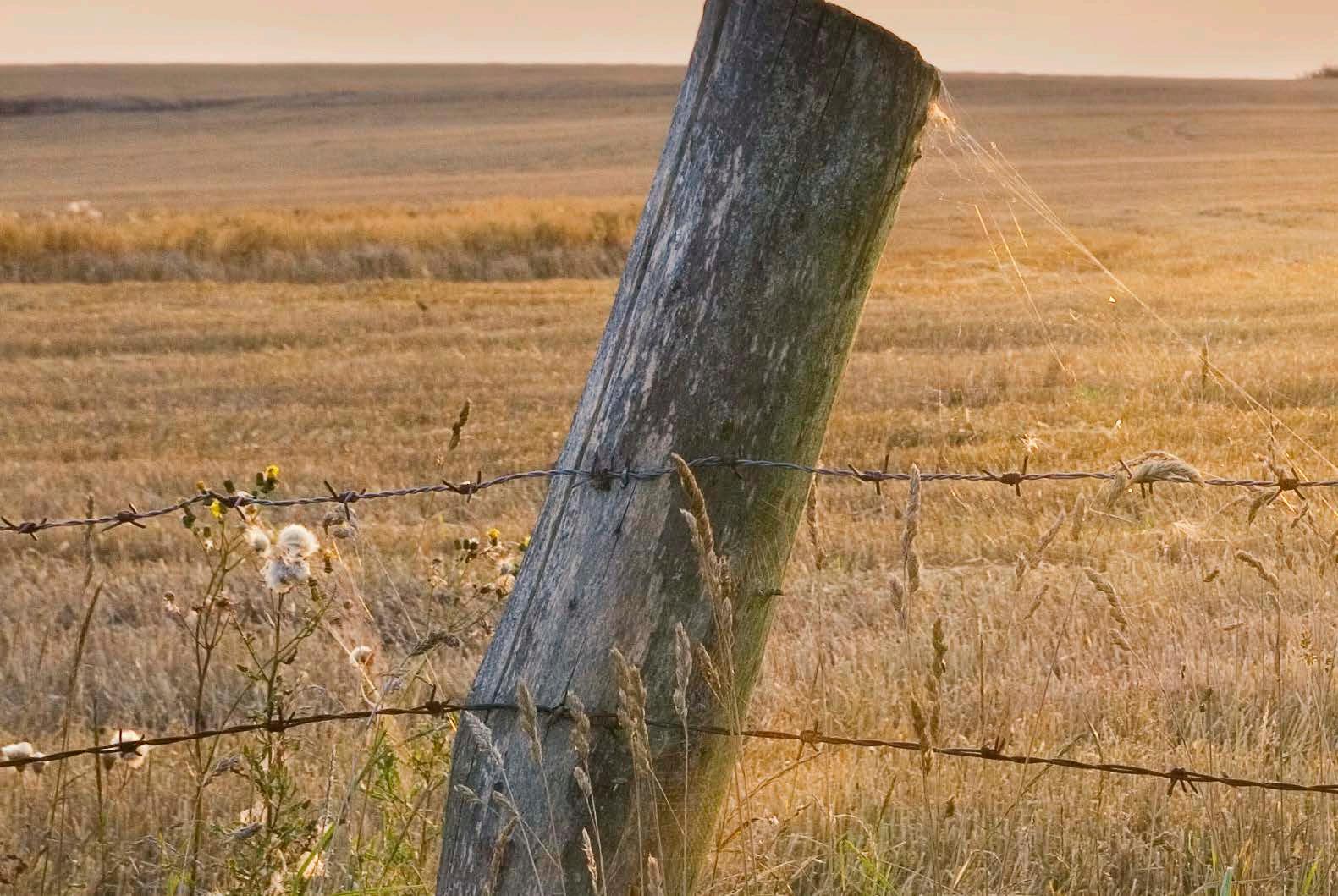
Are you thinking about retiring in the next 5 to 10 years? How concerned are you for the operation you built up over the course of your career? Do you want it to be a legacy organization? Would you like to see the people you lead now be successful when you are gone? If you answered yes to any of these questions, the following points are opportunities for you to think about and even act on soon. I certainly do not have all of the answers and I write this with the greatest respect for all of you reading, but this series of articles is based on a lifetime of observations starting with my father and his career journey, my own experiences of owning a business and being a partner in four other businesses, watching various business transitions from the board level, and coaching many organizations and teams of people through transitions. Along the way, I have had and seen many failures, successes, and everything in between.
 By Nels Lindberg, DVM, Production Animal Consultation
By Nels Lindberg, DVM, Production Animal Consultation
This issue is more relevant than ever. Roughly 4 million boomers will turn 65 each year over the next three years. That’s equivalent to more than 11,200 boomers turning 65 daily.¹ Some have already retired, and some may never retire until death. As the boomer generation faces retirement, we will continue to see massive transition in all businesses, including family-owned businesses. This also contributes to our labor shortage, with not enough people to fill the job openings created as boomers retire.
We as leaders must place extreme intentional effort into how we guide our noble operations forward through this massive workforce transition. For many of you, this should be at the top of your “work on the business” goals going forward. While there are many professionals speaking about and coaching in this area, the best people to provide real, practical advice are those who have done it personally and those who are engaged in the trenches doing it every day. Transitions in business leadership and ownership are often painful, usually messy, and generally prolonged. The person “turning
over the reins” is going through a heart-wrenching, emotional journey that cannot be rushed, while the ones waiting in the wings are often impatient yet possess abilities and talents we need to embrace and let shine.
The first step in preparing your organization for this kind of transition is to ask, does the organization know its long-term plan “beyond you”? Will your organization be able to keep providing a livelihood for your people beyond your leadership time frame or your physical life here on earth? Understand that your people do not need an exact plan today, but they do want to hear your thoughts on this. They need to know that you care for them beyond your time leading the organization. Talking about this subject is uncomfortable and difficult, but we must humbly accept our own mortality for the benefit of those we love, whether family members or team members, that have been with us in the trenches of the daily grind for months or even years.
Secondly, you must consider, do you want your operation to carry on as you have built it? Do you want it to uphold the management practices you
What are the principles that your family, operation, organization, or team has lived out every day for the last 10-50 years to create a culture of success?
worked to build over decades? Are there certain principles that created the foundation for success in your organization that you want to endure? Are these values clearly known and acted out daily? If not, take the time to write down the values and principles you learned from your parents, grandparents, mentors, and former leaders that have shaped your success. What are the principles that your family, operation, organization, or team has lived out every day for the last 10-50 years to create a culture of success? Write them down and make them known. Sit down with your team and let everyone know the principles and values that created the success they stand on today.
Lastly, as you think about and work through transitions, you must remember that processes change but principles do not. Processes must change over time, or the organization dies. We
must be nimble, flexible, willing to learn and change, always evaluating, and continually looking for opportunities to grow or improve efficiency. However, as we assess, reflect, and act to move forward, our bedrock principles and values must never change. Think of these “core values” as your constitution. They are meant to stand the test of time. Core values and principles dictate how we carry out processes and procedures. For example, your team may focus on acting with heartfelt honor and respect to those who came before, complete integrity, extreme humility, vulnerable honesty, passion with compassion, warrior-like courage, and a bountiful gratitude for all things.
You must be intentional about preparing your organization for transitions in leadership. It is not easy to sit down and discuss these issues, but it is not as difficult as you have in your mind. And it

is certainly preferable to facing incredibly painful “one-day transition events”. Let’s address this topic now for the benefit of those that depend on us as leaders.
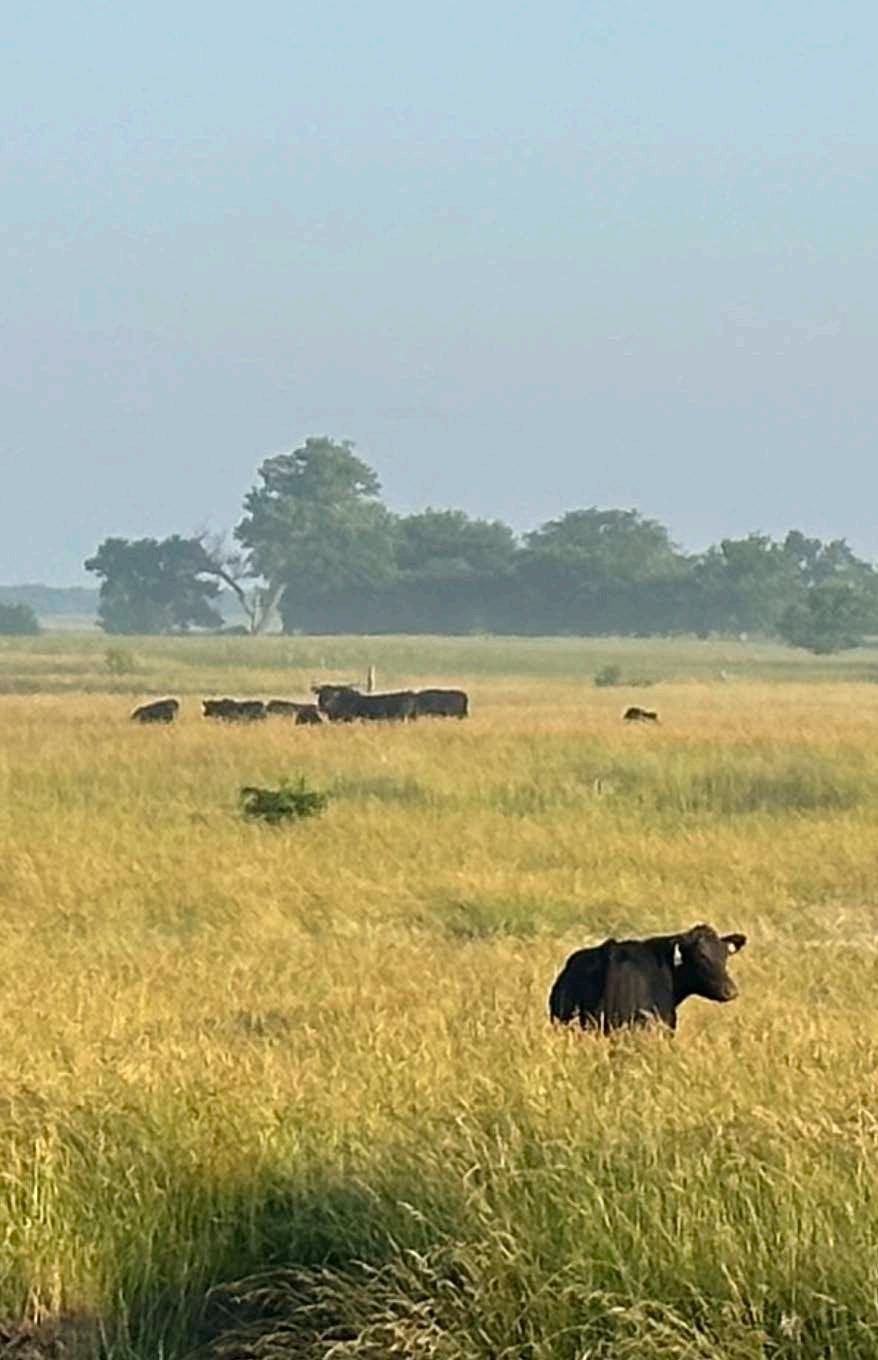

Two actions you can take now:
1. Communicate to your people that you are thinking about the future of the operation beyond yourself. You are working on “turning over the reins” and handing over decision making over the next 2-10 years. Make sure to note this time frame because the transition will take time. Also, be honest and let your team know that you are walking a tough mental and emotional journey through this process.
2. Reflect on and record the principles and values that created the bedrock foundation of success for your operation or team. We went through many examples, and I know you have others in mind. Get additional input from your team. Write your principles and values down and agree to them as a team or family. Remind your team that while your processes will continue to evolve, these foundational principles will never change.
No matter your age, if you are a leader, you need to start this process. If you are part of the next generation of leadership behind boomers, think about planting seeds to start the process. Some boomers have an extremely hard time pondering their own mortality. In their defense, many Gen Xers and Millennials have the same challenges; they just haven’t faced them yet. When planting seeds, start by showing honor and respect and knowing when to yield. We will dive into this more in the next article of this series.
If you have any questions as you work through this process, please reach out to me on any Dr. Nels social media account. I would be glad to help however I can!
Footnote: ¹CNBC, 2024. https://www.cnbc.com/2024/02/08/baby-boomershit-peak-65-in-2024-why-retirement-age-is-in-question.html
Dr. Nels Lindberg is a people coach, team coach, business coach, and keynote speaker, available virtually or in person. If you have any interest in these opportunities, please reach out to his office at 620-792-1265 and visit with his right-hand lady, Jill.

Forage quality of native range in the Southern Great Plains declines during the mid to late summer. Montgomery and others (2022) created a seasonal forage quality library for tallgrass prairie pastures by monthly sampling pastures over 5 years. These pastures were grazed using
year-long stocking at a moderate stocking rate of 15 acres per cow-calf unit with prescribed burns conducted during late March. The results of this multiyear analysis followed closely with expected patterns based on warm season forage growth patterns. Crude protein and digestibility of the forage increased in the spring months, beginning in April, peaking in May, and then steadily declining throughout the year. Lowest nutritional values tended to occur in January and February, crude protein and digestibility of forage rose from their lowest points in February to their maximums in May. Although grazing calves will select diets that are higher in quality than the pasture average, crude protein would be limiting for growth of both steer and ruminal microbes by mid-summer.
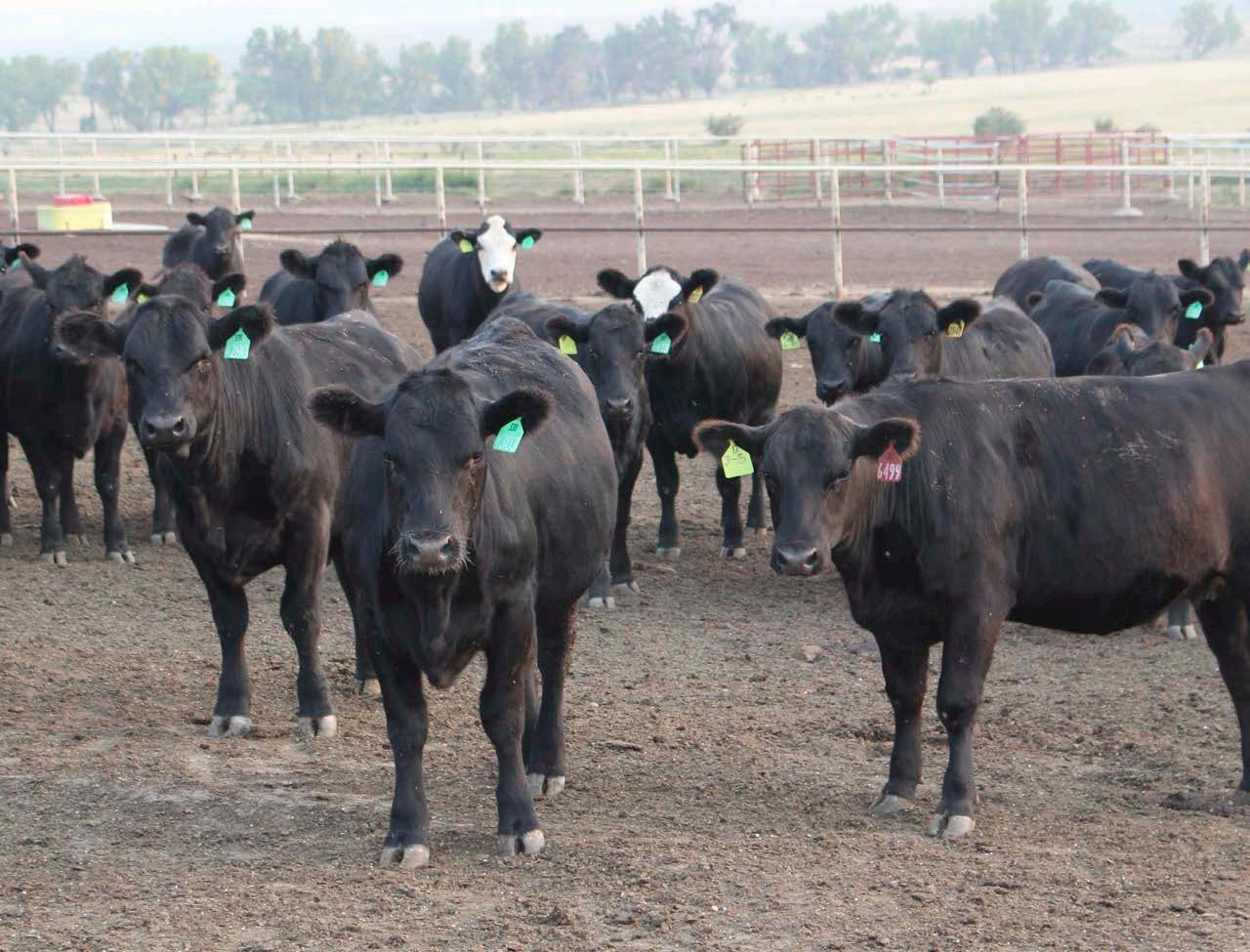
Performance of stocker calves on native range declines from highs of 2 lbs/day during early summer to less than 1 pound per day through the late summer. Deficiency in dietary protein causes dramatic reductions in forage intake and digestibility. A small amount of high protein supplement corrects the protein deficiency increasing both forage intake and forage digestibility when adequate forage is available. This logic is the foundation of the Oklahoma Gold and Oklahoma SuperGold supplementation programs developed in the 1980s.
Experiments at OSU found that feeding 1 pound/ day of a high protein supplement (protein meals such as cottonseed meal or soybean meal) increased average daily gains from 1.13 pounds per day to 1.51 pounds per day requiring only 2.7 pounds of feed/pound of added gain. Oklahoma Gold Program supplements consist of a minimum 38% crude protein and contain 1% phosphorus, which offsets mineral deficiencies in summer grasses and include an ionophore such as monensin or lasalocid to further increase body weight gains. This supplement package increases ADG by 0.55 pounds/day with a supplemental efficiency of 1.8 pounds of supplement/pound of added gain. This
supplementation program can be fed daily (1 pound of supplement/calf), but it has been found that feeding 3 days per week (2.3 pounds of supplement/ calf/feeding) is equally effective and may allow calves better access to supplement due to crowding and the low amount of supplement being fed.
The Oklahoma SuperGold Program is similar in concept but was designed to be a better match with grain milling byproduct feeds. In this program 2.5 pounds of 25% protein supplement including an ionophore is fed/day (or 5.8 pounds/feeding 3-days per week), to increase gains by about 0.7 pounds per day requiring 3.5 pounds of feed per pound of added gain.
Recently an extruded distillers grains cube has entered the regional market. Research at OSU (Adams and others, J. Anim. Sci. 100:1-11 skac097 https://doi.org/10.1093/jas/skac097) showed that the extrusion process decreased the fiber content and increased the crude protein, fat, and total digestible nutrient content of the distillers grains while increasing the flexibility by enabling feeding directly on the ground.
Research conducted at the USDA Southern Plains Range Research Station near Fort Supply on


native rangeland investigated using these cubes in a supplementation program for growing steers (Grigsby and others, J. Anim. Sci. 100 (Suppl. 3): 174-175 (Abstr.) https:// doi.org/10.1093/jas/skac247.322).
Steers were fed 4.7 pounds/steer 3 days/week (a 2-pound daily feeding rate) of extruded DDGS cube during the late summer from midJuly through the end of summer grazing in late August. Over 2 years supplementation increased average daily gains by 0.86 pounds/ day, requiring only 2.3 pounds of feed/pound of added gain (Table 2). Free-choice mineral supplements containing ionophores were offered to all calves whether supplemented or non-supplemented controls, so this performance increase was based only on the nutrients supplied by the supplement. These products are a viable alternative to the formulated Oklahoma SuperGold Program supplements and may be easier to acquire in many locations.

of added gain.
Are these supplement responses uniform across all forages and situations?
Our research team conducted several trials which evaluated the supplementation of calves grazing fertilized bermudagrass pastures in eastern Oklahoma (Adams and others, Appl. Anim. Sci. 38:518-530.https://doi.org/10.15232/aas.202202318) and Arkansas (Womack and others, Appl. Anim. Sci. 40:91–102 https://doi.org/10.15232/ aas.2023-02494) to determine the gain responses to supplementation (Table 3) in introduced forage systems.
In eastern Oklahoma (Adams and others) steers were offered 6.2 pounds of supplemental distillers grains cubes 3-days per week throughout the summer (2.6-pound daily feeding rate) over 2 summer grazing seasons. The forage quality was excellent with crude protein values over 12% each summer but increasing fiber content of the bermudagrass reduced the digestibility of the forage and limited performance. Providing a supplement during the early summer increased gains by 0.62 pounds per day, requiring 4.2 pounds of supplement for each pound of added gain. In the late summer, gains were only increased by an average of 0.4 pounds per day requiring 6.5 pounds of supplement per pound
In Arkansas (Womack and others) daily hand feeding with byproduct-based feeds (soybean hull/ corn gluten feed blend in year 1, distillers grains cubes in year 2, and corn gluten feed in year 3) was compared to a commercially available self-fed molasses-based tub. The hand-fed supplement was hand-fed 3.5 pounds of supplement 5 days per week (2.5-pound daily rate). The self-fed supplement was designed to provide 28% crude protein with 7% from non-protein nitrogen with a desired intake of 0.5 to 1.0 pounds per day. Both the hand-fed and selffed supplements were offered either all summer or only during the late summer. Intakes of the selffed supplement were 2 to 3 times higher than the manufacturer specified target intake, with average intakes ranging from 2 to 3 pounds per day. In the early summer (Table 3) hand feeding byproduct supplements increased average daily gain by 0.49 pounds per day requiring 5.1 pounds of feed per pound of added gain, while the self-fed supplement did not statistically increase performance. During the late summer there was no statistical difference in performance between controls and steers offered the self-fed supplement, yet the hand-fed supplement increased gains by 0.7 pounds per day requiring only 3.5 pounds of supplement per pound of added gain (Table 3, next page).
The lack of response to the self-fed supplement was not expected. It is likely that this is due to the higher forage quality of the fertilized bermudagrass forage system. The self-fed supplement is designed to supply a small amount of protein to offset protein

deficiencies in the late summer described above for the native prairie systems. Thus, the bermudagrass pasture with higher crude protein would likely not respond the same to supplementation with a small amount of a protein supplement. This is supported by the reduced gain response and increased supplement to gain ratios in the handfed supplements for the experiments with fertilized bermudagrass, which indicates that the increased performance is due to increasing the energy available to growing calves from the supplement as forages decrease in digestibility. More research is needed to determine the response of these selffed supplements in lower quality native range environments.
Supplementation of grazing calves during the late summer can be highly profitable even in years
with high input costs. The response by growing stocker calves may not be the same on differing forages and pasture types so the economics of the supplementation program need to be evaluated based on the types of pasture and supplement, the supplement cost, and the margins of the stocker cattle enterprise based on the current markets. There are alternatives available that do not require daily feeding. If supplements containing required minerals and ionophores are not available, feeding the mineral and supplements separately can be equally effective.
Dr. Paul Beck was raised on a wheat and stocker cattle operation in central Oklahoma, has B.S. and M.S. degrees from Oklahoma State University and a Ph.D. from University of Arkansas. He was Extension Forage and Beef Cattle Specialist at the University of Arkansas Southwest Research & Extension Center for 21 years. Paul and his wife Melissa moved back to Stillwater, OK in 2018 where Paul serves Oklahoma State University Department of Animal and Food Sciences as the State Extension Beef Cattle Nutrition Specialist for beef stocker and feedlot nutrition.


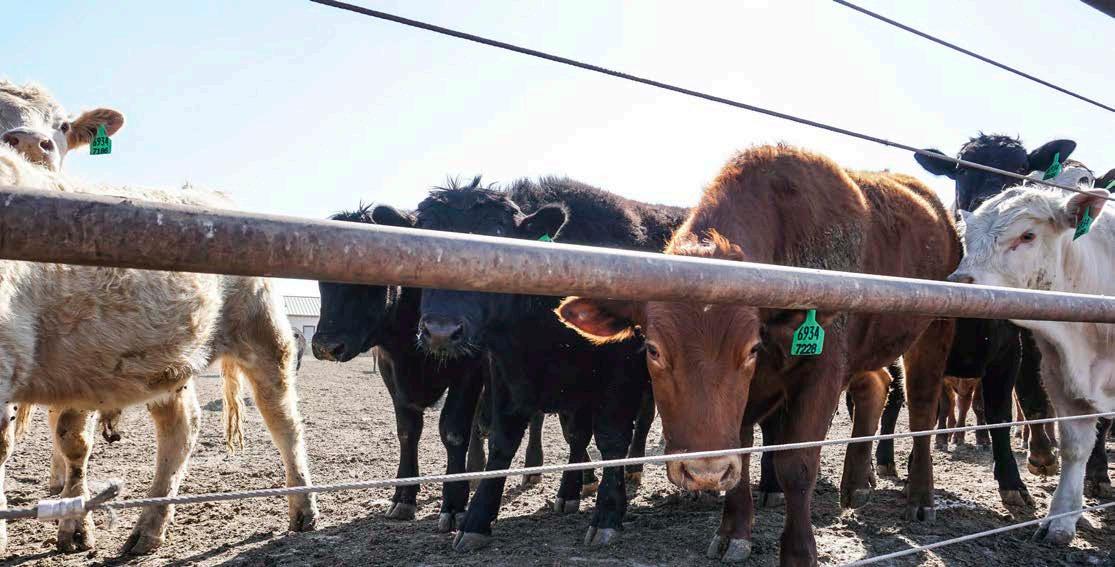
Cattle producers put a great deal of emphasis on prevention of disease in all sectors of production. Proper nutrition, cattle handling, deworming, and vaccinations, if appropriately implemented and managed, can help them maintain a low disease rate. One of the primary advantages cattle producers have is the ability to reduce disease transmission by having cattle on pastures, in small grass traps, or in large feedyard pens. One of the disadvantages is the inability to control additive stress due to dust, hot and cold temperature fluctuations, or excessive moisture. These conditions occur seasonally in feedyards and can result in an increase in disease, which requires an elevation in daily health interventions, or “pulls” (Figures 1A, 1B). No matter how hard we try or how well we execute prevention programs, disease is present. Managing cattle as they go to the treatment area or hospital and back to their home pen has become increasingly important, as time is valuable, and costs are increasing.
The hospital environment can create nosocomial infections, or those infections contracted or transmitted while in a hospital setting and are caused by organisms that are potentially resistant to antibiotics. This is one reason veterinarians may make the recommendation to recover certain cattle in the home pen rather than in a traditional hospital pen recovery system, or at a minimum, limit their stay in a hospital environment
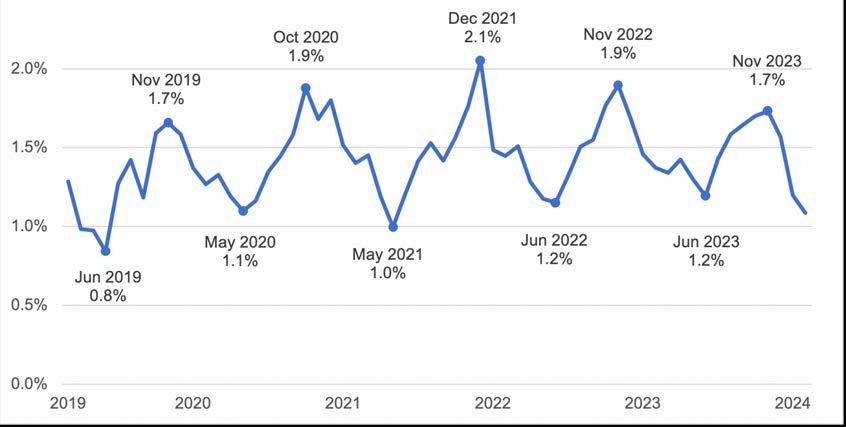
When we consider the most important aspects of hospital pen management for those cattle that are not robust enough to go home, we focus on the following:
• Hydration
• Nutrition
• Case definition
• Low-stress cattle handling
• Managing hospital pens
• Facility design and sanitation
Hydration status is one of the most important parameters to monitor to help improve outcomes, as water is the most important nutrient for cells to heal and have normal function. When cattle succumb to a virus or bacteria, creating disease, their immune system typically signals a fever which can change their drinking pattern and increase their requirement for water, resulting in dehydration. Dehydrated cattle can struggle with organ function and immune status, and they cannot withstand extreme environmental stressors, such as cold or
hot temperatures. The most successful hospital systems focus on providing access to free choice water and clean their water systems daily. Proper feeding is paramount to provide the nutrients for sick cattle to properly heal. As cattle get sick and change their eating and drinking patterns, they are not able to compete at the home pen bunk. Fever and the reduction in feed intake can alter their nutrient absorption resulting in weight loss. As we treat cattle with antibiotics to help their immune systems catch up and fight disease, we also create a situation where the good bacteria in the digestive system can be altered, making it even more critical that we provide long-stem hay and a balanced total mixed ration. It is recommended to maintain low competition at the water tank and feed bunk while cattle recover in hospital pens, and make sure fresh feed and hay are available 24 hours per day. Correct population density for hospital pens, as described below in the facility design and sanitation section, is critical to optimize rest and recovery.

As veterinarians, we teach caregivers the power of observation, attention to detail, and discovering early abnormal clinical signs of disease so they can arrive at the appropriate diagnoses. Training and educating caregivers to make good decisions, both in the pen and chute-side (Figure 2), is an important component of hospital management for achieving favorable
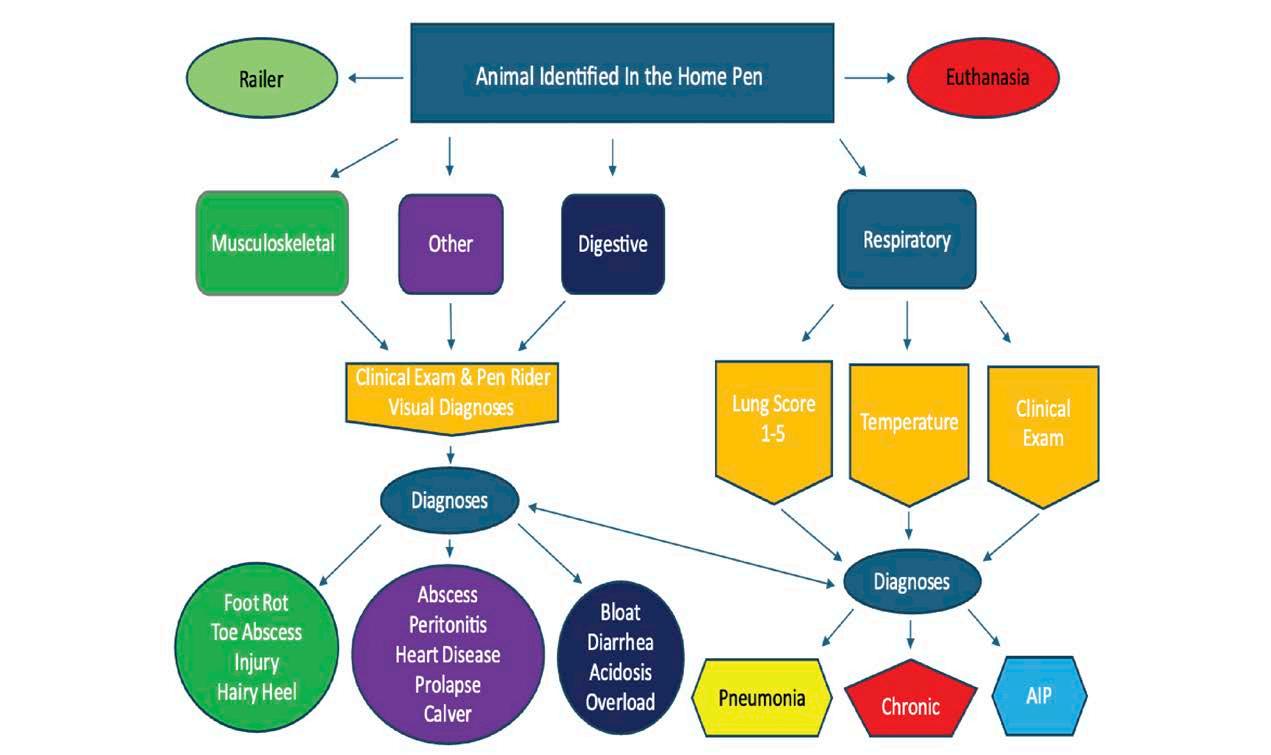
outcomes.
One of the primary ways PAC veterinarians evaluate disease severity is by training caregivers to develop an accurate case definition (Figure 3). An accurate case definition is accomplished by collecting a lung score, taking a temperature, performing a physical exam, and observing cattle for a treatment response. There is a sweet spot where all four components culminate in a successful diagnosis, an appropriate treatment regimen, and the animal’s full recovery.
Both lung score and temperature are vital diagnostic tools used to develop an accurate case definition. Hospital systems that only measure temperature develop an incomplete case definition by only measuring whether the immune system has recently recognized a virus or bacteria. Hospitals that only collect lung scores are measuring changes in lung airflow and can effectively predict a respiratory case fatality rate percentage, but they are not defining how the immune system is reacting to disease. Typically, we see better treatment outcomes for cattle with lung score 1 or 2 and moderate to lower temperature than for those with lung score 3, 4, or 5 and higher temperature.
Low-stress cattle handling, from the time cattle are identified as having disease until they are
returned to their home pen, is also important for best outcomes. Stress can impair immune function, which lowers antibiotic success rates and increases retreat and case fatality rates. It can be frustrating to pull diseased cattle early with an accurate pen observation only to have them succumb to lameness or abscess, develop a seroma, or fulminate into severe septicemia due to an injury. One way to measure cattle handling success is the monthly railer rate, which should be less than twenty-five percent of the average monthly mortality rate. PAC veterinarians recommend using appropriate stockmanship and horsemanship principles by training cattle to voluntarily move while building trust and utilizing correct position with pressure and release techniques.
Managing hospital pens by organizing cattle into like groups is an effective way to maintain incoming and outgoing cattle flow. One strategy for managing hospital pens is to sort cattle according to treatment date by rotating them into a series of pens, or changing their assigned pen based on which day they were treated. This allows recognition of a post-treatment interval (PTI) and takes the guess work out of when cattle should be evaluated for going home, retreatment, or needing more time. Another strategy is to place cattle in pens
with a similar diagnosis (respiratory, AIP, chronic, lameness, or convalescence). This method requires placing a date on a treatment tag, or otherwise marking individuals with a date to manage a PTI. Regardless of which strategy or combination of strategies is implemented, the goal when managing hospital pens is to be organized, consistent, and disciplined with evaluation and sorting.

Hospital facility design is an area not often considered when building a feedyard or expanding an established facility. It is important to evaluate the type of cattle your operation will manage by looking at risk for disease, expected seasonal pull rates, and your hospital pen daily census. There must be enough bunk space for a minimum of 18 inches of bunk per head, and pen space to have over 250 square feet per head. Cattle evaluation and sorting is a necessary daily activity. It requires facilities that are designed correctly and in good repair to lower stress and keep caregivers safe. Hospital inventory is also a critical control point for maintaining appropriate head counts. Some large operations use scanning technologies with high frequency tags to help account for incoming and outgoing cattle and to maintain inventory accuracy. Facilities should be capable of easy cleaning with good drainage and should be well maintained to improve biosecurity. By focusing on these aspects of hospital pen management and collaborating with their veterinarians to determine the appropriate treatment and recovery system for their operation, cattle producers can have confidence they are applying best practices and having a positive impact on treatment success.
Dr. Corbin Stevens is a founding partner of Production Animal Consultation and owner of Stevens Veterinary Services in Scott City, Kansas. His practice has a primary focus on cattle production while caring for and consulting cow-calf and feedyard operations. Dr. Stevens specializes in feedyard caregiver education, diagnostics, field research, and clinical evaluation. He completed a B.S. degree from Kansas State University College of Agriculture in 1997, a Doctor of Veterinary Medicine degree from Kansas State University in 1999, and was an associate in a mixed practice prior to starting Stevens Veterinary Services in 2004. He and his wife, Heidi, have four children: Makaela, Sawyer, Brinlie, and Ella.


Simply put, cattle are not designed to be the most efficient at cooling themselves down. Cattle of course do not sweat –just like our dogs – they pant and release heat through their lungs. And, their lungs are actually pretty small compared to their body size.
Before getting into management best practices for keeping our cattle cool, be sure you’re familiar with the signs of heat stress in cattle. During this event, cattle can have a respiration rate over 100 breaths per minute. You could see them experiencing a rapid breathing rate and open-mouth panting, extended neck, and slobbering – a lot of slobber. Also, you may see restlessness and distress, decreased movement, bunching, and overcrowding near water sources. Those are going to be pretty classic signs that your cattle are hot, and it needs to be addressed.
1. Adjust feed times. Like with horses, their digestion process produces a lot of heat, thus as the day goes on, cattle accumulate more heat from their digestion. Now, couple this with humidity and lack of air movement, and that’s when trouble brews. To help with this, we can adjust our feeding times to feed cattle during the cooler hours of the day, either in the morning or evening hours.
2. Provide shade and ample water. When you have high humidity and very little air movement through wind, its incredibly important cattle have shade to retreat to – whether in the form of tree cover out on pasture or shade structures, which are more commonly used on feedlots, confinement operations and dairies. Shade is a big thing for cattle. Having access to fresh water is vital for cattle health, especially during the warm weather many of us have been seeing. University of Nebraska-Lincoln notes that daily water intake may vary from 3 to 30 gallons per day, depending on age, weight, production
stage and weather conditions.
3. Fly control is actually very important in prevention of heat stress in cattle. Cattle that have a lot of flies on them tend to bunch up. If we can keep the fly pressure down, they won’t bunch up as much, helping them keep cool by encouraging air movement from the wind. We want to try to minimize the amount of time that they stand bunched up like that. From an environmental fly control standpoint, frequently remove manure, damp and soiled hay, uneaten grain, and any other source of decaying organic matter in confinement areas. For pasture cattle, encourage water drainage and minimize decaying plant matter with cutting or burning. For a stress-free fly control method, try selfapplicator rubs like dust bags and back rubbers to provide cattle with regular insecticide application. Good fly control tremendously helps reduce heat and stress in cattle.
4. Have proper ventilation and put misters in place. If we have cattle that are in feedlots and confinement structures, such as dairy barns, misters will cool them and the overall

air temperature. The only key there being ventilation, which becomes very important. If we have water moisture that we’re adding to the air, without proper ventilation we can make that air very humid. And if we don’t have that ventilation to draw that humidity out, then it can actually be worse. If your cattle are in a barn, make sure they have proper ventilation, whether that be air movement opportunities from outdoors or from a livestock fan.
5. Minimize daytime movement, and haul during cooler temperatures. The most important thing during this extreme heat and humidity is to avoid handling cattle other than in the morning. Cattle produce heat on their own throughout
their digestive process. They need evening and nighttime to cool back down. Also, avoid hauling during the heat of the day. Trailers don’t allow for good airflow. It’s not quite as bad as a closed car, but it gets warm in them. Try to arrange travel times to haul during the morning hours.
6. Replenish lost nutrients. Important minerals like magnesium, potassium and sodium can be depleted during sweat, evaporation, and even from the feces and urine of cattle. Supplementing cattle with electrolytes can benefit their health and performance.
Tony Hawkins, DVM, attended Kansas State University’s College of Veterinary Medicine. In addition to his role on the Technical Service team at Valley Vet Supply, Dr. Hawkins owns a mixedpractice veterinary clinic in northeast Kansas and is treasured by the community for his care across species. He is greatly involved in cattle health, including processing and obstetrical work, as well as providing hands-on care for horses and pets through wellness appointments and surgery.


“You can't vaccinate your way out of a BVDV problem.”
Dr. George Perry, Texas A&M AgriLife Overton Research and Extension Center.
Reproductive physiologist Dr. George Perry knows bovine viral diarrhea virus (BVDV) is the costliest disease of cattle worldwide.1 A recent study—led by one of his graduate students (Epperson)—discovered BVDV impacted 4 of 9 herds with 20% lower conception rates,2 but that didn’t come to mind when Perry’s case study herd experienced a 30% drop in pregnancy rates last March.1 “This particular herd vaccinates against BVDV, so we thought there’s just no way that was the problem.”
After purchasing 6 pregnant females from a trusted producer, the management team of Perry's study herd saw no reason to test the calves because the herd of origin was also vaccinated. However, two of those calves turned out to be persistently infected (PI) with BVDV, as a result of gestational fence-line contact from a neighboring farm. Months later, the management team continues to assess the full impact of this exposure beyond several unborn calves.
Manage BVDV with a simple three-step plan:
1. Determine your herd status using the IDEXX BVDV PI X2 Test at a local laboratory.
2. Work with your veterinarian to design a vaccination and biosecurity program.
3. Test all new introductions to the herd using the IDEXX SNAP ® BVDV Antigen Test on premises.
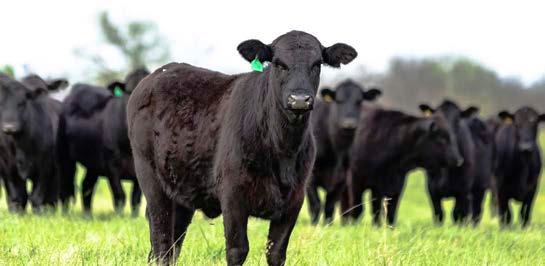
Due to the BVDV exposure in Perry’s case study herd, the management team now recommends testing every calf for BVDV using IDEXX tests within 30 days of birth. Vaccination will continue, as will pregnancy testing. “ We found the impact of the disease with pregnancy testing from IDEXX and that’s what saved this herd,” said Perry, adding that you should not wait for a conception drop to test for BVDV. In both studies, the drop in conception rate was the first indication of a much larger reproductive issue.
IDEXX diagnostic tests are used around the world to help beef operations of all sizes detect PI cattle that often look healthy and continually expose other animals to disease. Whether you need 20-minute, on-farm results to make quick decisions with confidence or want laboratory-based analysis for unmatched sensitivity, IDEXX has a solution.
We know this virus can infiltrate even the most well-managed herds, so testing for BVDV today means avoiding losses tomorrow. Check with your veterinarian to determine the right approach. Remember, IDEXX offers a complete portfolio of BVDV and pregnancy tests to monitor your herd.

Reprinted with permission from UNL BeefWatch
in the 1980s, Jason Anderson realized that in the cattle business, his options were to get better or get out.
Anderson, president and founder of Power Genetics, chose to get better. As the winner of the 2024 National Beef Quality Assurance Marketer of the Year award, the industry agrees the company, based in Arapahoe, Neb., has succeeded.
“I’m honored and humbled to be part of the BQA program,” Jason said. “It just keeps helping us manage our cattle better and be an advocate for the beef industry in terms of quality assurance.”
Jason and his brother J.D. picked up the reins in the business when cattle prices were low, interest rates were high, and everyone was just trying to survive. J.D. started selling seedstock bulls after graduating college. He branded his business Powerline Genetics.
“We wanted to find an endpoint marketing tool and a value-added grid,” Jason said. “The rancher would be our customer buying bulls, and we’d be their customer buying their calves back.”

further, also requiring an independent audit of all participating feedyards to make sure the principles are being applied, not just learned.
Power Genetics was created in 1991 and organized independent feedyards into a verified beef supply chain for commercial markets. The majority of the cattle that go through the program are sired by Powerline Genetics, and all 32-member feedyards are managed independently, but to the same criteria of animal handling and welfare. Consumer preference and perception is the ultimate guide for their practices.
This business model provides proven quality genetics to their feedyards, and it gives Powerline Genetics the data they need to continue to improve their seedstock genetics and produce high-quality beef.
The Beef Quality Assurance program has provided a framework for a consistent training program for proper animal handling and treatment techniques, and a standard of evaluation across all the member feedyards, and all employees of those feedyards must be BQA certified. While BQA certification is becoming expected in the beef industry, Power Genetics has taken it a step
“The BQA certification process is a great tool,” Jason said. “The audit tool puts teeth to the program.”
Power Genetics also requires that anyone who hauls cattle for them is BQA Transportation certified. That reduces stress at loading and unloading, which makes the processing smoother, with better yields and less bruising.
“The whole system is just better because we are all on the same standard operating procedure,” Jason said.
The program has improved the employee training process, which has resulted in more positive, consistent, and effective cattle handling, and improved employee safety, Jason said.
“All our employees, especially the younger generation, know only low-stress cattle handling and proper injection sites and how to properly store products and when to change needles. That’s because of BQA. My sons in the business don’t know how we used to do it, which we thought was right, but we didn’t know any better. Everything we do is to create a better eating experience for the consumer.”

That standard operating procedure was developed with the help of consulting veterinarians and Jesse Fulton, director of the Nebraska BQA program.
“I felt Power Genetics was deserving of this award because of their belief to go above and beyond what is required,” Fulton said. “When developing their feedyard management program best management practices, they developed protocols and record-keeping templates that either meet or exceed BQA guidelines while fulfilling the needs of the company and member feedyards. They also offer continuing education opportunities for member yards to
participate. These opportunities are generally veterinarian-led and cover a variety of animal health and low-stress animal handling topics.”
While Powerline Genetics works to help cow-calf producers improve genetics, and Power Genetics works to improve quality and profitability for their member feedyards, the whole system is designed for one purpose – to produce wholesome, quality beef that consumers feel good about eating.
Dr. Shane Terrell, veterinarian and research coordinator for Production Animal Consultation, has worked with Power Genetics and many of their member feedyards as a consulting veterinarian for the last six years. “Jason and Power Genetics are always looking to be the industry leaders, being on the forefront and thinking about the consumer and animal with every decision they make,” Terrell said. “That makes them overwhelmingly deserving of this award.”

the best of your ability and the right way, it’s fun to talk about what you do.”
Being able to point to the BQA certification and audit process, and marketing only cattle produced to that standard of animal handling and welfare eases conversations with consumers who may have the wrong idea about cattle production.
“We can stand behind how we manage the cattle,” Jason said. “When you’re producing beef to
The National Beef Quality Assurance Awards recognize outstanding members of the beef industry in five categories: Cow-Calf, Feedyard, Dairy, Marketer, and Educator. The National BQA Awards are selected by a committee of BQA certified representatives from universities, state beef councils, sponsors, and affiliated groups. Nominations are submitted by organizations, groups, or individuals on behalf of a U.S. beef producer, dairy beef producer, marketer, or educator. The awards were presented at the Cattle Industry Convention in Orlando in early February.

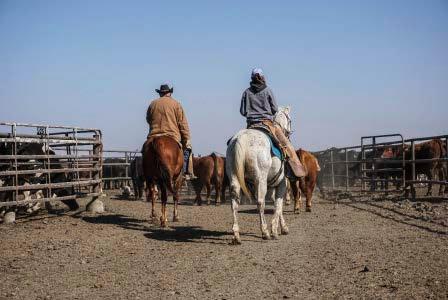
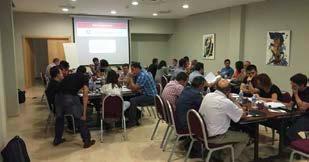

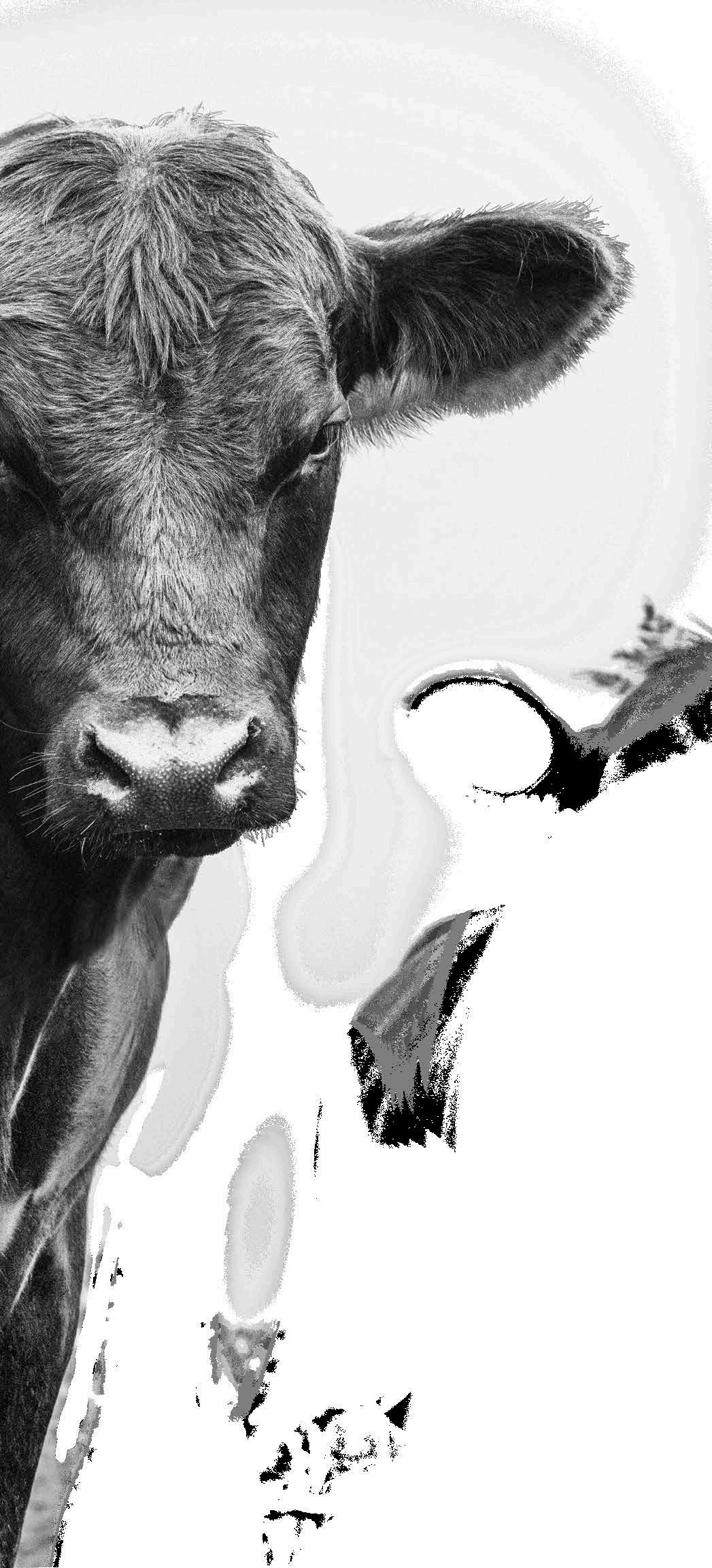
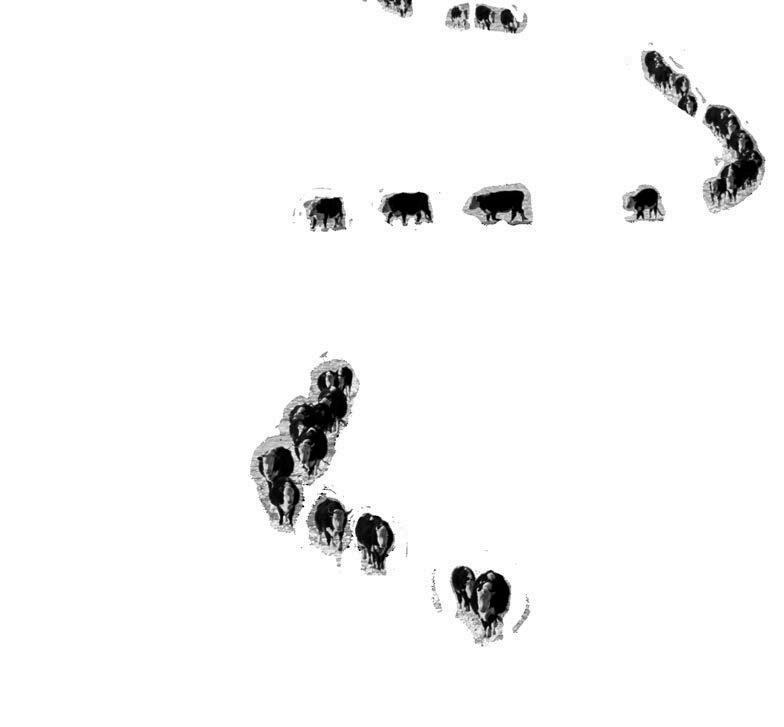


A lot of the most commonly used respiratory vaccines have been around for decades and haven’t changed at all since being introduced. And unfortunately, neither has the incidence of Bovine Respiratory Disease (BRD). Bimeda Biologicals offers producers and veterinarians looking to better prevent BRD a different path –one that equips their cattle with more complete, real-world protection.

BEEF OR “BEEF”: WHAT’S ON YOUR GRILL?By Travis O’Quinn, PhD, Kansas State University

Summer 2024 is right around the corner and it’s time to start preparing for all things grilling. There are lots of things that go into grilling, including fire management, marinating, seasoning, cut choice, fat content, serving sizes, prices, etc. However, one thing that has not officially entered the conversation is whether plant-based beef can replace traditional meats on plates. Dr. Travis O’Quinn, associate professor of meat sciences at Kansas State University, has been working to answer this question since 2019.

The first study that Dr. O’Quinn completed was done alongside DocTalk’s Dr. Dan Thomson. Dr. Thomson is the emeritus Chair of the Department of Animal Sciences in the College of Agriculture and Life Sciences at Iowa State University. He was formerly the Jones Professor of Veterinary Medicine, Director of the Beef Cattle Institute and Assistant Dean of Outreach for the College of Veterinary Medicine at Kansas State University. The study consisted of two groups; one a trained panel and the other one composed of consumers from the general public. These groups compared three fat blends of ground beef and three types of plant-based ground beef alternatives. The public panel was composed of 120 individuals who stated they ate beef 1-2 times a week, with most coming from a family of 2-3.
Results of this study show that ground beef, specifically the 73/27 blend, is highly preferred over the plant-based alternatives, which are: soy-based, retail and restaurant-sourced bean-based ground “beef”. Both panels agreed that the plant-based products were more tender and soft, but ground beef beat out the alternatives in flavor, appearance, and juiciness. It was also reported that the general public would not repurchase the ground beef alternatives. Dr. O’Quinn states that “you can convince people to try something one time, but if you want repeat customers it has to meet their expectations.” This study was done to show that while plant-based
products are an option for consumers, they will most likely purchase and consume beef products in a retail and restaurant setting. So how do these plant-based options fair when other ingredients are added?
Another study was conducted in the same style, but this time instead of plain meat, hamburgers and tacos were on the menu. Toppings such as cheese, lettuce, ketchup, and mustard were supplied for the burgers and cheese, lettuce, tomatoes, etc. were supplied for the tacos. The results from these studies were similar to the first: ground beef was highly preferred over the plant-based competition.
Both studies, done with professional and nonprofessional panels, ensure that the fad of plantbased options has dwindled down to a trickle, but the beef industry must stay vigilant. “This data is really critical and important for the beef industry because beef is a very unique product and the eating quality of beef, in this case ground beef, is very hard to replicate,” O’Quinn states. While these studies may show how much more the public enjoys ground beef over plant-based options: cattle ranchers must keep providing high-quality products consumers want to purchase to keep it that way.
This summer make sure that what’s on your grill is the same quality, taste, and appearance of a real burger: choose beef.
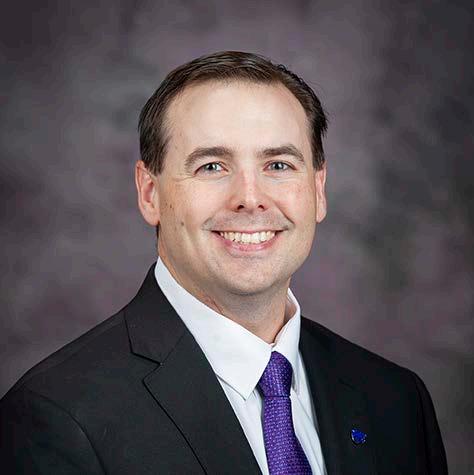
Dr. Travis O’Quinn was born in League City, TX. Through his youth, Dr. O’Quinn was actively involved in 4-H and FFA, participating on numerous judging teams including meats, livestock, and land. He graduated with his B.S. (2008) and M.S. (2010) degrees from Texas Tech University and earned a Ph.D. in Meat Science from Colorado State University (2012). Upon graduation, he returned to Texas Tech to conduct a post-doctoral research project working to develop a palatability-based beef grading system for the largest beef producer in New Zealand. Travis joined the Department of Animal Sciences and Industry at Kansas State University in July of 2014 with a 60% extension and 40% research appointment. Dr. O’Quinn’s research interests center on beef palatability and the factors affecting the traits of tenderness, juiciness and flavor. He has conducted research involving more than 13,000 beef consumers from across the country. He has worked extensively to evaluate the factors affecting beef flavor and to identify the production and management practices that can modify the flavor profile of beef. He has also worked to develop a technique to quantify and predict beef juiciness. He oversees the state 4-H and FFA meat judging programs and works to help increase student involvement in the meat industry through the growth of these programs. Travis enjoys training and mentoring students, both undergraduate and graduate. He currently serves as the faculty advisor and coach of the K-State Meat Judging Team, as well as the K-State Meat Animal Evaluation Team. He is also the faculty advisor to the Meat Science Academic Quiz Bowl team.

Looking for out of this world support, in addition to an all-star product line?
On top of the benefits of tulathromycin, VACASAN® (tulathromycin injection) is paired with Huvepharma’s expert support. We work hard to bring you quality products backed by capable professionals who are ready to assist with technical or sales questions.
When discussing tulathromycin options with your herd’s veterinarian, choose

It’s What’s for Dinner… Everywhere!By Derrell S. Peel, PhD, Oklahoma State University
When consumers purchase beef in the grocery store, they don’t buy packages wrapped in white butcher paper labeled “BEEF” in black, block letters. They buy specific products… strip steaks, ribeye steaks, ground beef, fajita meat, or whatever. Beef is many different products that are marketed in a multitude of different markets. The beef industry, which is characterized by a complex multi-sector cattle production industry, gets immensely more complex when finished animals are turned into the vast array of beef products produced from each carcass. Beef packers harvest finished cattle and initially turn them into several thousand wholesale beef products including many edible offal and inedible by-products. Subsequently, these wholesale beef products are turned into many thousands more beef products in a diverse set of further processing activities.
Fed beef carcasses are usually graded by quality. The beef industry has been very successful in increasing the quality of beef in recent years. Figure 1 shows that Choice beef has increased from roughly 65 percent fifteen years ago to over 73 percent today. Likewise, the Prime grading percentage has increased from just over 3 percent to nearly 10 percent today. The industry now consistently produces 84-85 percent Choice and higher beef, with Select carcasses representing just 15 percent of fed cattle, down from roughly 32 percent of cattle fifteen years ago. Prime carcasses are valued significantly higher than Choice carcasses, while Select carcasses receive a discount in value.
Beef carcasses consist of seven primals, with four major primals, including the rib, loin, round and chuck, along with the brisket, short plate, and flank. Figure 2 shows the value of the primals compared to the boxed beef cutout, which is calculated to represent the value of the entire carcass. Figure 2 highlights the important fact that the value differences of beef carcasses by quality grade are attributable to the rib and loin primals, which represent just 25 percent of the carcass weight. Moreover, the value of various cuts within the beef carcass vary widely. For example, the wholesale value of the tenderloin is typically 4-5 times higher than some chuck and round products.

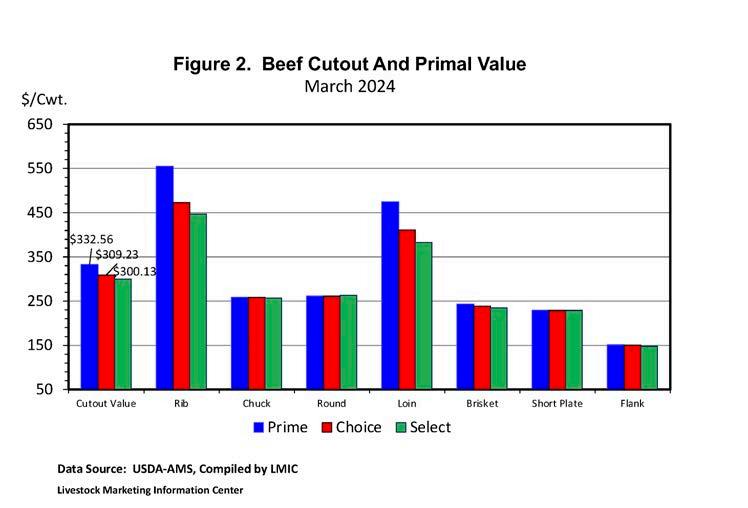
Operating between beef packers and the many finals markets for beef is a complex set of further processing and distribution activities. This relatively little-known segment of the beef industry consists of further processing facilities that are owned by large packing companies, large independent further processors/distributors and smaller firms providing specialized processing services and product manufacturing.
Today, most beef in retail grocery stores is received as case-ready from further processors. In many instances, these products are produced in facilities owned by large packers. Packaging steaks for retail grocery, for example, requires relatively little meat processing but a large emphasis on packaging for final retail sale. In grocery stores, steaks vary in size and weight and individual packages are priced accordingly.
In contrast, preparing beef for food service often requires significantly more processing. Restaurant menus specify exact product size and weight, e.g., a 10-ounce Sirloin. Portion control processing ensures that food service beef items are identical in size, weight, thickness and quality, so as to match menu descriptions and facilitate consistent cooking. Portion control processing is frequently labor-intensive requiring skilled meat cutters to trim steaks to portion sizes. Bench trim from such portion-control processing is another product that will be utilized in cooked products such as taco meat or pizza topping. This illustrates the product proliferation that results in so many beef products. In general, anytime a knife is used on a piece of meat, one product becomes two products.
Ground beef is a large and specialized segment of beef processing. In total, ground beef accounts for 40-50 percent of total beef consumption. Ground
beef for retail grocery is frequently produced in conjunction with facilities that produce case-ready product. In retail grocery, ground beef is typically sourced from fresh, domestic beef supplies, often reflecting specific primal sources, such as ground round, ground chuck, ground sirloin, etc. For food service, especially the quick service hamburger restaurants, ground beef is intensely price competitive and is provided by grinding companies that utilize fresh beef trimmings along with frozen domestic and imported lean beef.
Other further processing of beef includes production of breaded products, such as chickenfried steak, frozen entrees, and soups and other canned products. Beef is also processed into jerky and a wide variety of sausage products, ranging from summer sausage and pepperoni to hotdogs.
Beef is marketed through three principal types of food markets: retail grocery, food service and exports. However, in each of these marketing channels, the set of beef products and how they are used varies.
Food consumed at home is primarily sourced from the retail grocery sector. Retail grocery includes traditional grocery stores, supermarkets/ supercenters, warehouse stores, specialized retail stores (e.g., natural/organic foods), and nontraditional stores, including convenience stores. Total food-at-home expenditures represented 43.8 percent of total food expenditures in 2022.
Retail grocery is dominated nationally by a few large retail grocery chains. The majority of fresh beef in retail grocery arrives at the store as case-ready product from a further processing facility. With a couple of exceptions in regional grocery chains, most grocery stores do not have butchers and little or no meat-cutting is done in stores. Most beef in retail grocery is marketed fresh and it typically includes popular steak items along with ground beef. Most grocery stores maintain a relatively fixed beef product line with occasional featuring of special beef products. Grocery stores will feature roasts or stew meat or other slow-cooked type items in the winter, with popular grilling steaks, such as strip steaks, ribeye and sirloin steak in the summer. Ground beef is a major beef item year-round.
Food consumed away from home is sourced from the food service sector. This includes restaurants, hotels, schools and universities as well as hospitals and other institutions.
Food-away-from-home accounted for 56.2 percent of total food expenditures in 2022. In total, the food service utilizes a wide range of beef products but often in limited specific circumstances. For example, full-service restaurants include white-tablecloth steakhouses that feature a number of high-quality steaks as well as casual dining restaurants that have a more varied menu and feature one or two steaks. Some beef products, such as the beef tenderloin, are utilized almost exclusively in food service. Other steaks such as ribeye and strip loin are popular in both food service and retail grocery. Limited service restaurants include quick-service restaurants that do not provide table-service. These include popular hamburger chains and account for vast quantities of ground beef consumption. Full-service and limited-service restaurants each account for about 50 percent of total restaurant food expenditures, with total restaurant expenditures making up 69.3 percent of total food-away-from-home.
U.S. beef exports have averaged 11.1 percent of total beef production in the past decade. Although exports represent a relatively small share of the beef industry, the importance of exports is far greater. Beef exports add value to the beef industry and provide markets for products that have little or no demand in the U.S. Exports support domestic beef demand because, in the absence of exports, products valued less in the U.S. would be consumed domestically in place of more preferred products. All beef produced is consumed somewhere.
A wide variety of beef products are exported to a long list of international customers. However, a few large destinations dominate beef export markets. The three largest markets are in Asia and have nearly equal shares of total exports.
In 2023, South Korea accounted for 22.1 percent of beef exports, followed closely by Japan with a 21.0 percent share. The combined market of China/Hong Kong is the third largest export market with 19.5 percent of total exports. These three markets, along with Taiwan, sixth largest with a 6.1 percent share, accounted for 68.9 percent of 2023 beef exports. South Korea has been the fastest growing export market for the U.S. the past decade, increasing from an 11.7 percent share to 22.1 percent of total exports and exceeding Japan as the number one export market for the first time in 2023. North American trade with Mexico and Canada accounted for another 19.3 percent of exports in 2023. The remaining 11.8 percent of beef exports are relatively
small quantities shipped to a wide range of countries including the Philippines, Indonesia, Netherlands, Vietnam, Guatemala, Chile, and many others.
Like domestic markets, beef exports are specific markets for specific products. A diverse set of export markets is valuable to provide a broader base of demand for U.S. beef. Some markets heavily feature a small set of products, e.g., short ribs in South Korea, while others have more general preferences for specific primals. For example, Asian markets generally prefer beef products containing more fat, such as the chuck, which work well with hot-pot style cooking, while Latin American markets frequently prefer leaner beef products from the round.
It is common to refer to beef demand as though it is a single product and a simple concept. In fact, each of the many thousands of beef products is a separate market operating with unique supply and demand for each product. These products interact with each other and with other protein sources and ultimately are recognized in aggregate as the derived demand determining the value of finished cattle. Beef is what’s for dinner… everywhere.
Derrell Peel is the Charles Breedlove Professor of Agribusiness in the Department of Agricultural Economics. He has served as the Extension Livestock Marketing Specialist since he came to Oklahoma State University in 1989. He has B.S. and M.S. degrees from Montana State University and a Ph.D. from the University of Illinois. He previously served as the Superintendent of the Southeastern Colorado Range Research Station in Springfield, Colorado. His main program areas at Oklahoma State University include livestock market outlook and marketing/risk management education for livestock producers. Derrell also works in the area of international livestock and meat trade with particular focus on Mexico and Canada and the North American livestock and meat industry. He lived in Mexico on sabbatical in 2001 and has developed an extensive knowledge of the Mexican cattle and beef industry and the economics of cattle and beef trade between the U.S. and Mexico.

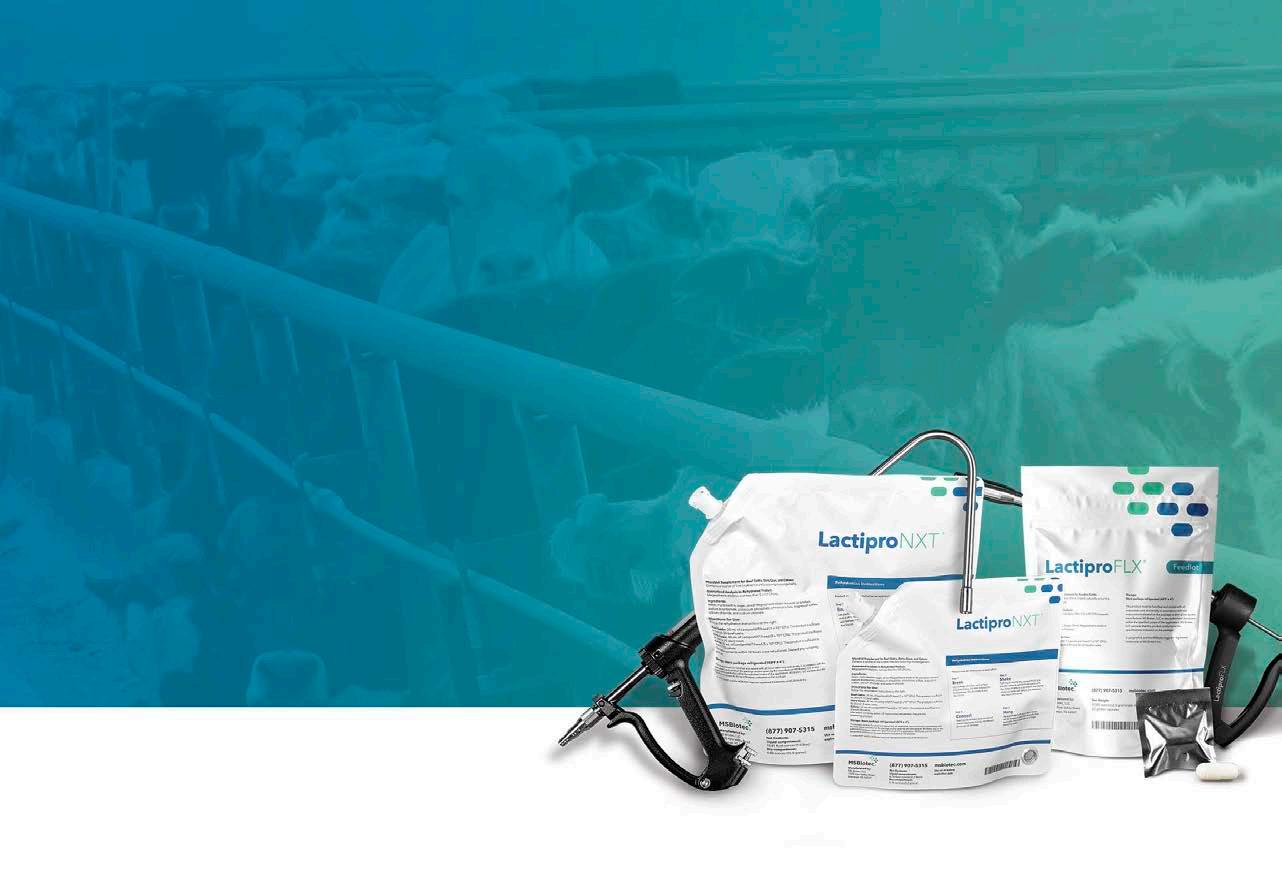
Escrito por Paul Beck, PhD, el Departamento de Ciencias Animales y Ciencias Alimentarias de la Universidad Estatal de Oklahoma

La calidad del forraje de los pastizales nativos de las Grandes Llanuras del Sur disminuye entre mediados y finales del verano. Montgomery y otros (2022) crearon una biblioteca de la calidad del forraje estacional para pastizales de pastos altos de pradera mediante muestreos mensuales de pastizales durante 5 años. Estos pastizales
fueron pastoreados utilizando ganado durante todo el año a una tasa de pastoreo moderada de 15 acres por unidad de vaca-becerro con quemas prescritas realizadas a finales de marzo. Los resultados de este análisis de varios años siguieron de cerca los patrones esperados basados en los patrones de crecimiento del forraje de estación cálida. La proteína cruda y la digestibilidad del forraje aumentaron en los meses de primavera, comenzando en abril, alcanzando su punto máximo en mayo y luego disminuyeron constantemente a lo largo del año. Los valores nutricionales más bajos tendieron a ocurrir en enero y febrero, la proteína cruda y la digestibilidad del forraje aumentaron desde sus puntos más bajos en febrero hasta sus puntos máximos en mayo. Aunque los becerros en pastoreo seleccionarán dietas de mayor calidad que el promedio del pastizal, la proteína cruda estaría limitando el crecimiento del novillo y los microbios ruminales a mediados del verano.
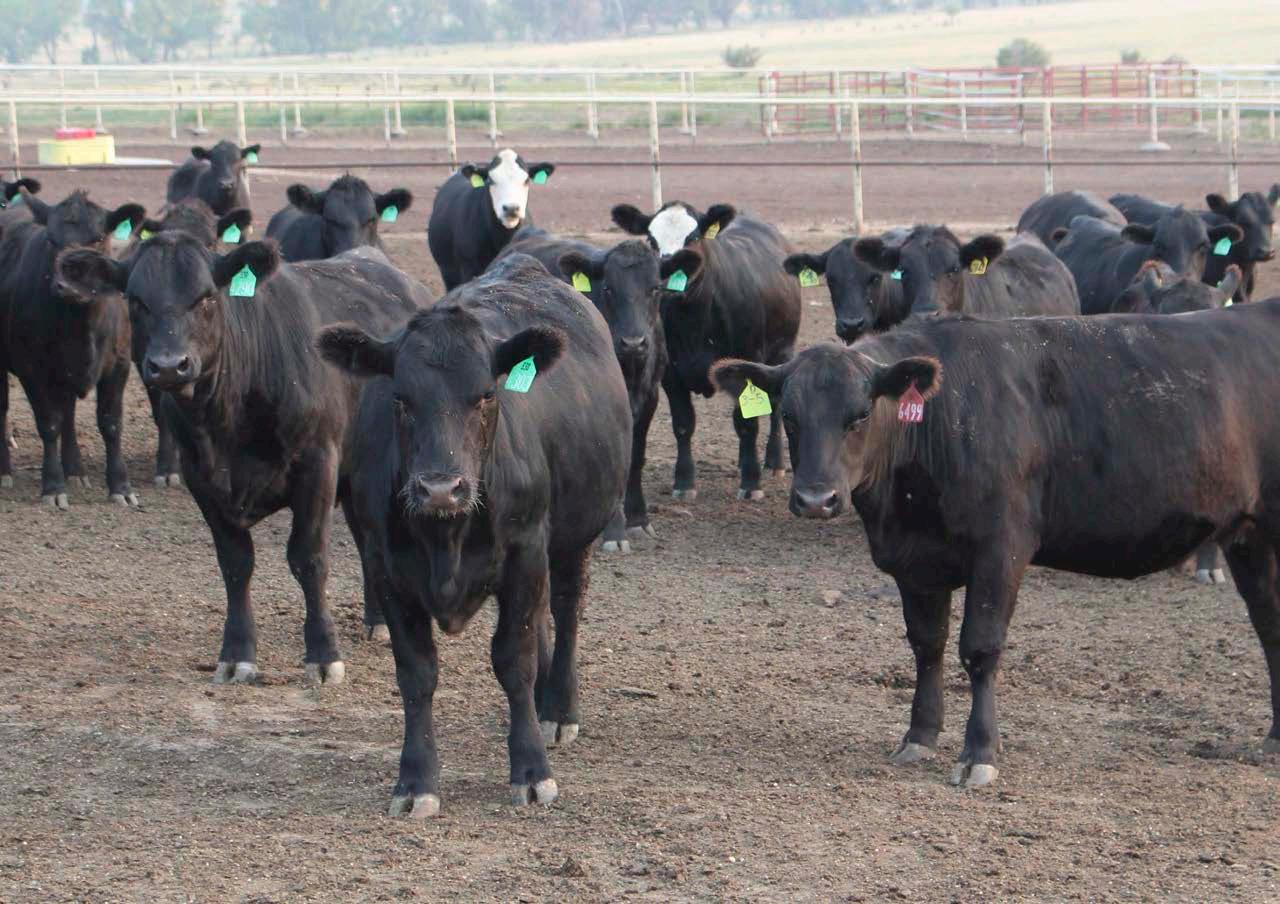
El rendimiento de los becerros en desarrollo en pastizales nativos disminuye desde máximas de 2 libras por día a principios del verano a menos de una libra por día hasta finales del verano. La deficiencia de proteína en la dieta causa reducciones dramáticas en el consumo y la digestibilidad del forraje. Una pequeña cantidad de suplemento alto en proteína corrige la deficiencia de proteína aumentando el consumo y la digestibilidad del forraje cuando el forraje adecuado esta disponible.
Esta lógica es la fundación de los programas de suplementación Okalhoma Gold y Oklahoma SuperGold desarrollados en la década de 1980. Los experimentos en la Universidad Estatal de Oklahoma (OSU, por sus siglas en inglés) encontraron que alimentar 1 libra por día de suplemento alto en proteína (harinas proteicas como la harina de semilla de algodón o la harina de soya) aumentaba las ganancias diarias promedio de 1.13 libras por día a 1.51 libras por día, requiriendo sólo 2.7 libras de alimento por libra de ganancia adicional. Los suplementos del Programa Oklahoma Gold consisten en un mínimo de 38% de proteína cruda y contienen el 1% de fósforo, lo cual compensa las deficiencias minerales en los pastos de verano e
incluyen un ionóforo como monensina o lasalocid para aumentar aún más las ganancias de peso corporal. Este paquete de suplementos aumenta la ganancia diaria promedio por 0.55 libras por día con una eficiencia suplementaria de 1.8 libras de suplemento por libra de ganancia adicional. Este programa de suplementación se puede alimentar diariamente (1 libra de suplemento por becerro), pero se ha descubierto que alimentarlo 3 días por semana (2.3 libras de suplemento por becerro por alimentación) es igualmente efectivo y le puede permitir a los becerros un mejor acceso al suplemento debido al amontonamiento y la baja cantidad de suplemento siendo alimentado.

El Programa Oklahoma SuperGold es similar en concepto, pero fue diseñado para ser una mejor combinación con los alimentos de subproductos de molienda de granos. En este programa, 2.5 libras de suplemento proteico al 25% incluyendo un ionóforo son alimentadas por día (o 5.8 libras por alimentación 3 días a la semana), para aumentar las ganancias por aproximadamente 0.7 libras por día, lo que requiere 3.5 libras de alimento por libra de ganancia adicional.

Recientemente ingresó al mercado regional un cubo de granos de destilería extruidos. La investigación en OSU (Adams and others, J. Anim. Sci. 100:1-11 skac097 https:// doi.org/10.1093/jas/skac097) mostró que el proceso de extrusión disminuyó el contenido de fibra, aumentó la proteína cruda, la grasa y el contenido total de nutrientes digestibles de los granos de destilería; mientras aumentaba la flexibilidad al permitir la alimentación directamente en el suelo.
La investigación realizada en la Estación de Investigación Southern Plains Range del Departamento de Agricultura de los Estados Unidos (USDA, por sus siglas en inglés) cerca de Fort Supply en pastizales nativos investigó el uso de estos cubos en un programa de suplementación para novillos en crecimiento (Grigsby and others, J. Anim. Sci. 100 (Suppl. 3): 174-175 (Abstr.) https://doi.org/10.1093/ jas/skac247.322). Los novillos fueron alimentados 4.7 libras por novillo 3 días a la semana (una tasa de alimentación diaria de 2 libras) de cubos de granos secos de destilería con solubles (DDGS, por sus siglas en inglés) extruidos durante finales del verano, desde mediados de julio hasta el final del

pastoreo de verano a finales de agosto. Durante 2 años, la suplementación aumentó las ganancias diarias promedio por 0.86 libras por día, requiriendo solo 2.3 libras de alimento por libra de ganancia adicional (Tabla 2). Se ofrecieron suplementos minerales de libre elección que contenían ionóforos a todos los becerros, aunque fueran de grupos de control suplementados o no suplementados, por lo que este aumento de rendimiento se basó únicamente en los nutrientes suministrados por el

suplemento. Estos productos son una alternativa viable a los suplementos formulados del Programa Oklahoma SuperGold y pueden ser más fáciles de adquirir en muchos lugares.
¿Acaso estas respuestas a los suplementos son uniformes para todos los forrajes y situaciones?
Nuestro equipo de investigación realizó varias pruebas experimentales que evaluaron la suplementación de becerros que pastoreaban en pastizales de pasto bermuda fertilizados en el este de Oklahoma (Adams and others, Appl. Anim. Sci. 38:518-530. https://doi.org/10.15232/aas.202202318) y Arkansas (Womack and others, Appl. Anim. Sci. 40:91–102 https://doi.org/10.15232/aas.202302494) para determinar las respuestas de ganancia a la suplementación (Tabla 3) en sistemas de forraje introducidos.
En el este de Oklahoma (Adams y otros), a los novillos se les ofrecieron 6.2 libras de cubos de granos de destilería suplementarios 3 días a la semana durante todo el verano (a una tasa de alimentación diaria de 2.6 libras) durante dos temporadas de pastoreo de verano. La calidad del forraje era excelente con valores de proteína cruda superiores al 12% cada verano, pero el aumento del contenido de fibra del pasto bermuda redujo la digestibilidad del forraje y limito el rendimiento. Proporcionar un suplemento a principios del verano aumentó las ganancias por 0.62 libras por día, lo que requiere 4.2 libras de suplemento por cada libra de ganancia adicional. A finales del verano, las ganancias solo aumentaron en un promedio de 0.4 libras por día, lo que requirió 6.5 libras de suplemento por cada libra de ganancial adicional. En Arkansas (Womack y otros) la alimentación manual diaria con alimentos basados en subproductos (mezcla de alimento de cáscara de soya y gluten de maíz en el año 1, cubos de granos de destilería en el año 2 y alimento de gluten de maíz en el año 3) se comparó con una tina autoalimentada a base de melaza comercialmente disponible. El suplemento alimentado manualmente fue alimentado manualmente a 3.5 libras de suplemento 5 días a la semana (a una tasa diaria de 2.5 libras). El suplemento autoalimentado fue diseñado para proporcionar un 28% de proteína
cruda con un 7% de nitrógeno no proteico con un consumo deseado de 0.5 a 1.0 libra por día. Tanto los suplementos de alimentación manual como los autoalimentados fueron ofrecidos durante todo el verano o sólo a finales del verano. El consumo del suplemento autoalimentado fue de 2 a 3 veces más alto que el consumo objetivo especificado por el fabricante, con consumos promedio que oscilaron de 2 a 3 libras por día. A principios del verano (Tabla 3) los suplementos de subproductos de alimentación manual aumentaron la ganancia diaria promedio por 0.49 libras por día, lo que requirió 5.1 libras de alimento por libra de ganancia adicional, mientras que el suplemento autoalimentado no aumentó estadísticamente el rendimiento. A finales del verano no hubo diferencia estadística en el rendimiento entre los grupos de control y los novillos a los que se les ofreció el suplemento autoalimentado, sin embargo, el suplemento alimentado manualmente aumentó las ganancias por 0.7 libras por día, requiriendo solo 3.5 libras de suplemento por libra de ganancia adicional (Tabla 3).
No se esperaba la falta de respuesta al suplemento autoalimentado. Es probable que esto se deba a la mayor calidad del forraje del sistema de forraje de pasto bermuda fertilizado. El suplemento autoalimentado está diseñado para suministrar una pequeña cantidad de proteína para compensar las deficiencias de proteína a finales del verano descritas anteriormente para los sistemas de praderas nativas. Por lo tanto, el pastizal de pasto bermuda con mayor proteína cruda probablemente no respondería de la misma manera a la suplementación con una pequeña cantidad de suplemento proteico. Esto está respaldado por la respuesta de ganancia reducida y el aumento de las proporciones de suplemento por ganancia en los suplementos alimentados manualmente para los experimentos con pasto bermuda fertilizado, lo que indica que el aumento en el rendimiento se debe al aumento de la energía disponible para los becerros en crecimiento en el suplemento a medida que los forrajes disminuyen en digestibilidad. Se necesita más investigación para determinar la respuesta de estos suplementos autoalimentados en entornos de pastos nativos de menor calidad.
La suplementación de los becerros en pastoreo durante el final del verano puede ser altamente rentable incluso en años con altos costos de insumos. La respuesta de los becerros en desarrollo puede no ser la misma en diferentes forrajes y tipos de pastizales, por lo que la economía del programa de suplementación debe evaluarse en base a los tipos de pastizales y suplemento, el costo del suplemento y los márgenes de la empresa de ganado en desarrollo basados en los mercados
actuales. Hay alternativas disponibles que no requieren alimentación diaria. Si los suplementos que contienen los minerales e ionóforos requeridos no están disponibles, alimentar el mineral y los suplementos por separado puede ser igualmente eficaz.
El Dr. Paul Beck se crio en una operación de trigo y ganado en desarrollo en el centro de Oklahoma, tiene una licenciatura y una maestría de la Universidad Estatal de Oklahoma y un doctorado de la Universidad de Arkansas. Fue especialista de Extensión en Forrajes y Ganado de Carne en el Centro de Extensión e Investigación del Suroeste de la Universidad de Arkansas durante 21 años. Paul y su esposa Melissa se mudaron de regreso a Stillwater, OK en el 2018 donde Paul trabaja en el Departamento de Ciencias Animales y Ciencias Alimentarias de la Universidad Estatal de Oklahoma como el Especialista en Nutrición de Ganado de Carne de la Extensión Estatal para la nutrición de ganado de carne en desarrollo y corrales de engorda.





Escrito por Corbin Stevens, DVM, Production Animal Consultation
Los productores de ganado ponen mucho énfasis en la prevención de enfermedades en todos los sectores de producción. La nutrición adecuada, el manejo del ganado, la desparasitación y las vacunas, si se implementan y se manejan adecuadamente, pueden ayudarlos a mantener una tasa baja de enfermedad. Una de las principales ventajas que tienen los productores de ganado es la capacidad para reducir la transmisión de enfermedades al tener el ganado en pastizales, en pequeñas trampas de pastoreo o en grandes corrales de engorda. Una de las desventajas es la incapacidad de controlar el estrés aditivo debido al polvo, las fluctuaciones de temperaturas frías y calientes o la humedad excesiva. Estas condiciones ocurren estacionalmente en las operaciones de corrales de engorda y pueden resultar en un aumento de enfermedades, lo cual requiere un aumento en las intervenciones de salud diarias, o “animales enfermos” que se sacan de su corral de origen (Figuras 1A, 1B). No importa cuánto nos esforcemos o qué tan bien ejecutemos los programas de prevención, la enfermedad está presente. El manejo del ganado cuando va al área de tratamiento o al hospital y de regreso a su corral de origen se ha vuelto cada vez más importante, ya que el tiempo es valioso y los costos están aumentando.
El entorno hospitalario puede crear infecciones nosocomiales, o aquellas infecciones que se contraen o transmiten en un entorno hospitalario y son causadas por organismos que son potencialmente resistentes a los antibióticos. Esta es una razón por la que los veterinarios pueden recomendar recuperar cierto ganado en su corral de origen en lugar de un sistema de recuperación de corral hospitalario tradicional, o como mínimo, limitar su estadía en un entorno hospitalario. Cuando consideramos los aspectos más importantes del manejo de corrales de hospital para el ganado que no es lo suficientemente robusto como para regresar a su corral de origen, nos enfocamos en lo siguiente:
• Hidratación
• Nutrición
• Definición de caso

• Manejo de ganado de bajo estrés
• Manejo de corrales hospitalarios
• Diseño de instalaciones y saneamiento
El estado de hidratación es uno de los parámetros más importantes a monitorear para ayudar a mejorar los resultados, ya que el agua es el nutriente más importante para que las células sanen y funcionen normalmente. Cuando el ganado sucumbe a un virus o bacteria, creando una enfermedad, su sistema inmunológico típicamente indica una fiebre, lo que puede cambiar su patrón de consumo de agua y aumentar su requerimiento de

agua, resultando en deshidratación. El ganado deshidratado puede tener dificultad con la función de los órganos y su estado inmunológico y no puede soportar factores estresantes ambientales extremos, como temperaturas frías o calientes. Los sistemas hospitalarios más exitosos se enfocan en brindar acceso a agua a libre elección y en la limpieza de sus sistemas de agua diariamente. Una alimentación adecuada es primordial para proveer los nutrientes necesarios para que el ganado enfermo se recupere adecuadamente. A medida que el ganado se enferma y cambia sus patrones de consumo de agua y alimento, no puede competir por comedero en su corral de origen. La fiebre y la reducción del consumo de alimento pueden alterar la absorción de nutrientes resultando en pérdida de peso. A medida que tratamos al ganado con antibióticos para ayudar a que su sistema inmunológico se ponga al día y combata la enfermedad, también creamos una situación en la que las bacterias buenas en el sistema digestivo pueden alterarse, lo que lo hace aún más crítico que proporcionemos heno de tallo largo y una ración mixta total balanceada. Se recomienda mantener una baja competencia en el bebedero y el comedero mientras el ganado se recupera en los corrales de hospital, y asegurarse de que haya
alimento fresco y heno disponibles las 24 horas del día. La densidad de población correcta para los corrales hospitalarios, como se describe a continuación en la sección de diseño de instalaciones y saneamiento, es crítico para optimizar el descanso y la recuperación.
Como veterinario, enseñamos a los cuidadores el poder de la observación, la atención a los detalles y el descubrimiento temprano de signos clínicos anormales de enfermedades para que puedan llegar al diagnóstico adecuado. Capacitar y educar a los cuidadores para que tomen buenas decisiones, tanto en el corral como en la prensa (Figura 2), es un componente importante del manejo hospitalario para lograr resultados favorables.
miden la temperatura del animal para desarrollar una definición de caso incompleta al medir únicamente si el sistema inmunológico ha reconocido recientemente un virus o una bacteria. Los hospitales que solo recopilan puntuaciones pulmonares están midiendo los cambios en el flujo de aire pulmonar y pueden predecir efectivamente un porcentaje de tasa de caso de fatalidad respiratoria, pero no definen cómo está reaccionando el sistema inmunológico ante la enfermedad. Por lo general, vemos mejores resultados de tratamiento para el ganado con una puntuación pulmonar de 1 o 2 y una temperatura baja a moderada que para aquellos que presentan una puntuación
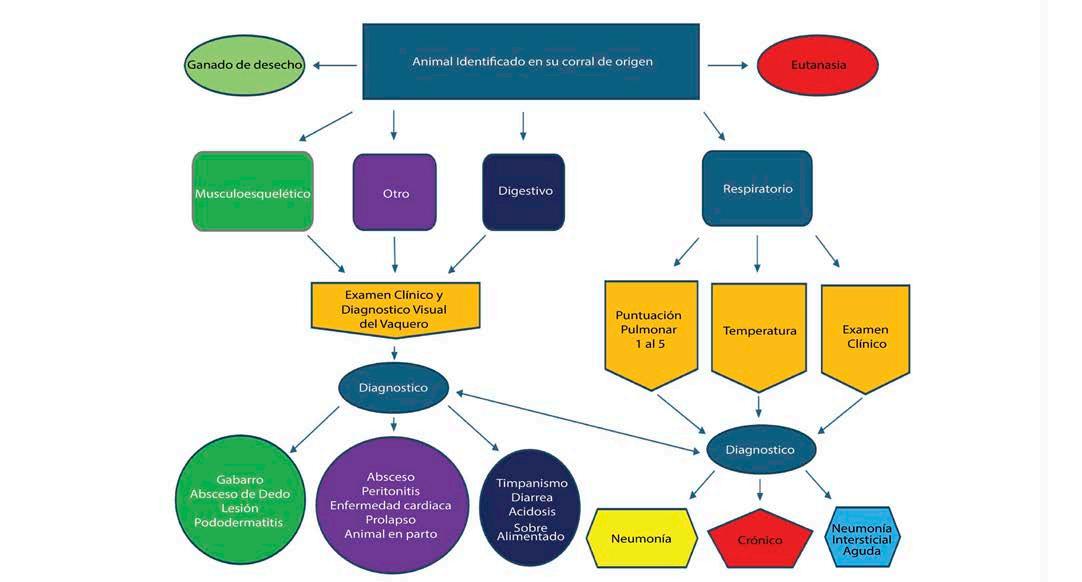
Una de las principales formas en que los veterinarios de PAC evalúan la gravedad de la enfermedad es capacitando a los cuidadores para desarrollar una definición de caso precisa (Figura 3). Una definición de caso precisa se logra recopilando una puntuación pulmonar, tomando la temperatura del animal, realizando un examen físico y observando al ganado para determinar su respuesta al tratamiento. Existe un punto óptimo en el que los cuatro componentes culminan en un diagnóstico exitoso, un régimen de tratamiento adecuado y la recuperación total del animal.
Tanto la puntuación pulmonar como la temperatura del animal son herramientas de diagnóstico vitales que se utilizan para desarrollar una definición de caso precisa. Los sistemas hospitalarios que solo
pulmonar de 3, 4, o 5 y una temperatura más alta. El manejo del ganado de bajo estrés, desde el momento en que se identifica que el ganado tiene una enfermedad hasta que regresa a su corral de origen, también es importante para obtener mejores resultados. El estrés puede afectar la función inmune, lo que reduce las tasas de éxito de los antibióticos y aumenta las tasas de retratamiento y caso de fatalidad. Puede ser frustrante sacar ganado enfermo temprano con una observación precisa del corral solo para que sucumba a una cojera o un absceso, desarrolle un seroma o fulmine hacia una septicemia severa debido a una lesión. Una forma de medir el éxito del manejo del ganado es la tasa mensual de ganado de desecho, lo cual debe ser menor del veinticinco por ciento de la tasa de mortalidad mensual promedio. Los veterinarios
de PAC recomiendan utilizar principios apropiados de ganadería y equitación para entrenar al ganado a que se mueva voluntariamente mientras genera confianza y utiliza la posición correcta con técnicas de presión y liberación.
Manejar corrales hospitalarios organizando el ganado en grupos similares es una forma eficaz de mantener el flujo de entrada y salida de ganado. Una estrategia para manejar los corrales hospitalarios es clasificar el ganado de acuerdo con la fecha de tratamiento, rotándolos en una serie de corrales o cambiando el corral asignado según el día en que fueron tratados. Esto permite reconocer un intervalo post-tratamiento (PTI, por sus siglas en ingles) y elimina las conjeturas sobre cuándo se debe evaluar el ganado para volver a su corral de origen, volverle a administrar otro tratamiento o si necesita más tiempo en el hospital. Otra estrategia es colocar ganado en corrales con un diagnóstico similar (respiratorio, neumonía intersticial aguda, crónico, cojera o convalecencia). Este método requiere colocar una fecha en el arete de tratamiento o marcar a los animales individuales con una fecha para manejar un intervalo post-tratamiento. Independientemente de cuál estrategia o combinación de estrategias se implemente, el objetivo al manejar los corrales hospitalarios es ser organizado, consistente y disciplinado con la evaluación y clasificación del ganado.
El diseño de las instalaciones hospitalarias es un área que no suele considerarse al construir una operación de corrales de engorda o al ampliar una instalación establecida. Es importante evaluar el tipo de ganado que manejará su operación observando el riesgo de enfermedades, las tasas estacionales esperadas de animales enfermos detectados y el censo diario de sus corrales hospitalarios. Debe haber suficiente espacio de comedero para un mínimo de 18 pulgadas de comedero por cabeza y espacio en el corral para proporcionar más de 250 pies cuadrados por cabeza. La evaluación y clasificación del ganado es una actividad diaria necesaria. Requiere instalaciones que estén diseñadas correctamente y en buen estado para reducir el estrés y mantener seguros a los cuidadores. El

inventario hospitalario también es un punto crítico de control para mantener conteos adecuados del ganado. Algunas operaciones grandes utilizan tecnologías de escaneo con aretes de alta frecuencia para ayudar a contabilizar el ganado entrante y saliente y mantener la precisión del inventario. Las instalaciones deben poder limpiarse fácilmente, tener un buen drenaje y estar bien mantenidas para mejorar la bioseguridad. Al enfocarse en estos aspectos del manejo de corrales hospitalarios y colaborar con sus veterinarios para determinar el tratamiento y sistema de recuperación adecuados para su operación, los productores de ganado pueden tener la confianza de que están aplicando las mejores prácticas y teniendo un impacto positivo en el éxito del tratamiento.
El Dr. Corbin Stevens es socio fundador de Production Animal Consultation y propietario de Stevens Veterinary Services en Scott City, Kansas. Su práctica se enfoca principalmente en la producción de ganado mientras cuida y asesora operaciones de vaca-becerro y corrales de engorda. El Dr. Stevens se especializa en la educación de los cuidadores de corrales de engorda, diagnóstico, investigación en campo y evaluación clínica. Termino su licenciatura en el Colegio de Agricultura de la Universidad Estatal de Kansas en 1997, un doctorado en medicina veterinaria en la Universidad Estatal de Kansas en 1999, y fue un asociado en una práctica mixta antes de iniciar Stevens Veterinary Services en 2004. Él y su esposa, Heidi, tienen cuatro hijos: Makaela, Sawyer, Brinlie y Ella.

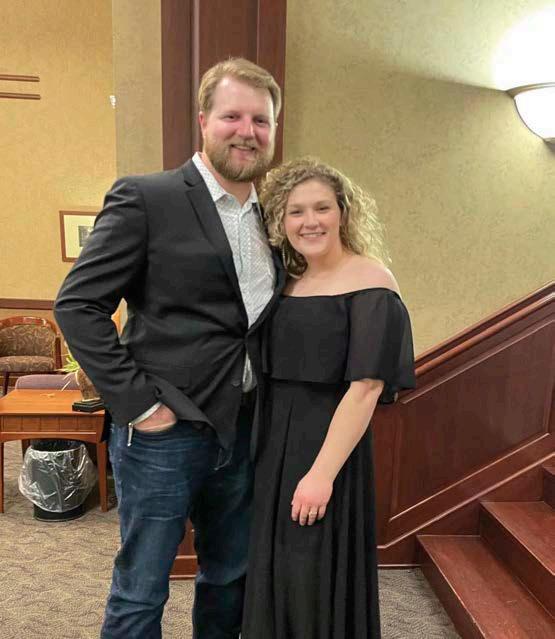
Hello, my name is Dr. Taw Fredrickson and I have been with the PAC group for a little over a year and a half. I am originally from a small town in central Illinois where I grew up on a small farm raising cattle and going on veterinary calls with my dad. I got my biology degree from Illinois College and then attended veterinary school at the University of Illinois where I met my wife, Rebekah, who is also a veterinarian. We currently reside in Sioux City, IA, and I look forward to meeting you in the future.
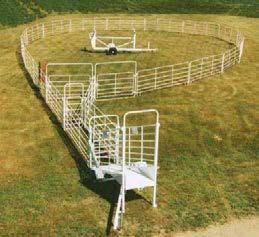

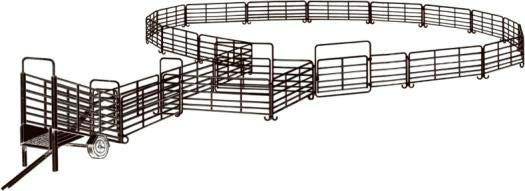
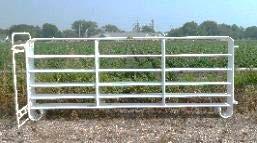

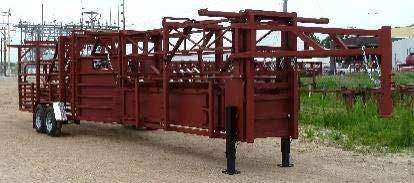
A little boy was waiting for his mother to come out of the grocery store.
As he waited, he was approached by a man who asked, “Son, can you tell me where the post office is?”
The little boy replied, “Sure, just go straight down the street a couple of blocks and turn to your right.”
The man thanked the boy sincerely and said, “I’m the new pastor in town and I’d like for you to come to church on Sunday. I’ll show you how to get to Heaven.”
The little boy replied with a chuckle, “Aww, come on! You don’t even know the way to the post office!”
Paddy phones an ambulance because his mate’s been hit by a car.
Paddy: “Get an ambulance here quick - he’s bleeding from his nose and ears, and I think both his legs are broken.”
Operator: “What is your location, sir?”
Paddy: “Outside number 28 Eucalyptus Street.”
Operator: “How do you spell that, sir?”
Silence.... (heavy breathing) and after a minute.
Operator: “Are you there, sir?”
More heavy breathing and another minute later.
Operator: “Sir, can you hear me?”
This goes on for another few minutes until...
Operator: “Sir, please answer me. Can you still hear me?”
Paddy: “Yes, sorry about that.... I couldn’t spell ‘eucalyptus’, so I just dragged him round to number 3 Oak Street!”
Grandson: “You want a cupcake, Grampa?”
Grampa: “Sure.”
Grandson: “I made them by myself. Gramma just helped me a little.”
Grampa: “Mmm! They’re delicious. How did you get the icing so smooth?”
Grandson: “I licked them.”
Keep on smiling! Warm Regards, Jane Sullivan

we are blessed to be part of the greatest industry, in the greatest country here on earth. The binding force that holds it all together are the priceless dedicated men and women who keep the wheels turning. Day by day, year by year, every individual at every layer has created the most innovative successful system of food production in the world. Risk takers and innovators committed to the goal of another harvest. Most wouldn’t spend a dollar on a lotto ticket at the local 7-11 but roll the dice every day.
Obviously, it takes all kinds. Individuals with varying talents, skill sets, levels of commitment, optimism, and vision. Most intriguing to me are those who have the special gift of recognizing that hidden gem or diamond in the rough. Their keen senses and powers of observation give way to discovery, innovation, and profitability. Dumpster divers, MacGyver’s, and Pickers, with a unique sense of adventure, accomplishment and achievement attained with every new-found treasure or sweet business deal. The main ingredients needed are imagination, opportunity, and action. One of my personal more memorable finds materialized while on a routine vet call (opportunity). As I worked through a string of seasoned ranch horses I noticed a major demolition project in progress across the county road at the local chicken farm. One of the main housing facilities had been torn down and its bones were neatly piled on the lot. Part of the reclamation project were several structural I beam trusses. I knew with a little work and fabrication, I would have some of the makings needed for a very spacious affordable machine shed. The shed would be built on an old slab of concrete where an abandoned silage bunker existed for many years. The building would be enclosed with a large bay door to the north and the south end would be left open (imagination). In due time the project would take several years to complete but it was worth every minute of the wait (action). To this day, I still have to smile when I reminisce on my sweet chicken shed deal and the way the whole plan eventually came together. There was to be only one unforeseen problem…Pigeons!!! Those nasty little scavengers of the sky, armed with a primitive gravitational radar system more precise than the famous Norden Bombsight used in WWII. Their mission, drop moist copious olive green and white
cluster bombs effortlessly throughout my beautiful machine shed. Popular strategic targets are a driver’s side windshield, assorted door handles or electrical wall outlets with accompanying extension cords. Their ultimate goal, occupation of enemy territory while building nests and producing more nasty little pigeons.

Over the years I’ve thought a lot about my frustrating ongoing battle with these unwanted feathered intruders. As it turns out pigeons are a lot like thoughts and feelings inhabiting the battlefield of our minds, flying in and out at will. What thoughts (voices) are speaking to you? What voices are you projecting? Are your thoughts speaking doubt and failure or are they positive and productive, producing a harvest of success and peace? Only we control their access, only we can shoo them away, only we allow them to build an unwanted “nest.” Thoughts and feelings are part of life with their roots imbedded in the voice we choose to receive. When confidence killing doubt comes, do you let it build a nest? When the grip of addiction continues to throw dirt in your face, do you let it build a nest? When the uncertainty of a negative medical report overwhelms, do you let it build a nest? When the bitterness of unforgiveness haunts, do you forgive and forget, or do you let it build a nest? When an impossible relationship in your family or the workplace stifles, do you overcome or build a nest? When the unkind words of another bring destruction, do you address your vulnerability, dismiss the idle chatter, and stay on course, or do you let them build the nest?

Ultimately the difference in men is the voice they choose to trust. In the book of Acts, God gave the most precious and ultimate gift, The Holy Spirit. The Sail to power our ship and the Rudder to guide it. The gateway to heartache and sin is opened when we ignore His presence and guidance.
Theonlyfoundation, strongholds,andtruths residing in our minds (machine shed) must be rooted in the bedrock of God’s word. We can’t become what we need to be if we remain what we are. Father, thank you for awareness, humility, commitment, and accountability. Thank you for forgiveness, Your Son, and Your Holy Spirit. Thank you for “nest” breaking power through Jesus. Amen.

and Satan’s native language is lies (John 8:44). The domain in which we decide what is true and what is false is the mind.” i
In this battle for the mind, what is the result if the pigeons are allowed to build a nest of lies and the squatters take over your thoughts, feelings, and emotions? The list is almost endless but would readily include suicide, anger, hatred, sexual desire, revenge, murder, rape, unforgiveness, jealousy, fear, harm, and feelings of worthlessness. In looking at the life impact of just one of these evil deceits, we see suicide as the #1 cause of death in 13- to 14-year-olds in the United States. ii In the age bracket of 15 to 24, suicide is the 2nd leading cause of death. iii The pigeons of lies (in this case via social media?) have come home to roost.
The visual image of unwanted pigeons inhabiting a building, soiling the inside, and taking up residence (nesting) is unfortunately too familiar a sight in rural areas. Something similar occurs in more urban settings involving human pigeons. These nasty pests are called “squatters”. Squatters come in uninvited when you are not paying attention. Just like their feathered cousins, they build a nest, soil the place, and then have the gall to defy your removing them. Something comparable to the above also occurs in our minds. Unwanted or undesirable thoughts, imagination, voices, emotions, can come in and take residence. The soiling, stench, and damage is just as real, and too frequently the harm and resulting chaos may last for years or even a lifetime.
Whether we realize it or not, there is a battle raging for the control of our minds. This battle for the mind is a spiritual one which pits good vs. evil, right vs. wrong, Jesus vs. Satan. Whoever or whatever controls our minds, controls us and by extension our destiny and life outcome. This is a very real battle where the stakes are high. There is no middle ground. One cannot afford to be neutral or worse, in denial.
Satan’s MO is lying. In John 8:44 Jesus notes: “he (Satan) was a murderer from the beginning, and does not stand in the truth because there is no truth in him. Whenever he tells a lie, he speaks from his own nature, because he is a liar and the father of lies.” Dr. David Jeremiah expands on this, noting Satan’s “chief strategy is to deny, confuse, misrepresent, or counterfeit whatever God has said. God’s native language is truth (John 17:17)
The human mind is a vast battlefield where there have been not only extensive losses in the quality of individuals’ lives, but sadly in life itself. As noted earlier, the battle for the mind is a spiritual one with Satan and evil fully committed to its destruction. One cannot fight a spiritual battle with the flesh or human weapons. 2 Corinthians 10:3-4 explains, “ For

though we walk in the flesh, we do not wage battle according to the flesh, for the weapons of our warfare are not of the flesh, but divinely powerful for the destruction of fortresses .”
God did not create us and then abandon us to be gun fodder in a spiritual war. He knew the adversary was “hell bent” on our destruction and sent Jesus to be our savior. If the term “savior” has too much baggage for you, then how about “liberator” or “rescuer” or “deliverer”? In the book of John (16:7), Jesus tells his disciples of his impending death. He
mentions that it is good that He is leaving, because otherwise He would not be able to send the “Helper”. If you read on, you will see that the “Helper” has another name, “Spirit of Truth”. This so called “Helper” is none other than the Holy Spirit who indwells and seals every Christ follower. Now, with the Holy Spirit indwelling our hearts and minds, we have the spiritual strength and resources to prevail
and win over the enemy. We need to be obedient to His guidance and remain vigilant to avoid the everpresent siren call of evil.
Here are some additional Biblical references for your consideration and success in this area of continual spiritual attack.
Galatians 5:22-23 But the fruit of the Spirit is love, joy, peace, patience, kindness, goodness, faithfulness, gentleness, self-control...
(Note: Imagine a mind and a life centered around these fruits (outcomes) of the indwelling Holy Spirit.)
Romans 12:2 And do not be conformed to this world, but be transformed by the renewing of your mind, so that you may prove what the will of God is, that which is good and acceptable and perfect.
Romans 8:6 For to set the mind on the flesh is death, but to set the mind on the Spirit is life and peace.
Proverbs 4:23 Keep your heart with all vigilance, for from it flow the springs of life.
Corinthians 10:5 We are destroying arguments and all arrogance raised against the knowledge of God, and we are taking every thought captive to the obedience of Christ,
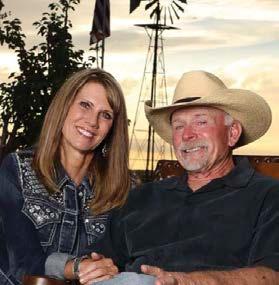
Doug Ford, DVM is the owner of Beaver Creek Veterinary Clinic in Brush, Colorado. Doug earned his DVM degree from Colorado State University. Brush, Colorado has been his home since graduating from Colorado State. Doug’s practice has been remarkably diverse over 40 years of veterinary medicine. Dogs, cats, cow-calf, feedlot, two sale barns, and spaying thousands of heifers for grass. The last 20 years of practice has been 50% large western dairies and 50% beef cattle (spaying, cow-calf, and feedlots). In 2005, Doug was given the privilege to become one of the six founding members of PAC. Doug and his wife Jan ranch in their “spare” time. They are also heavily involved in a wetlands development project on the South Platte River near Snyder, Colorado. Doug’s dad used to say, “Get your grades up. Do you want to grow up to be a ditch digger?” Doug had no idea how much fun it would be to play in the dirt with dozers and track hoes. He feels truly blessed and believes that the best days are yet to come.
Greg Quakenbush, DVM is a 1978 graduate of Colorado State University and spent 16 years in large animal practice in Porterville, California. For 19 years, Dr. Q worked for Zoetis (P fi zer) and was Director of the US Cattle Technical Services team. Since 2013, Dr. Q has worked with the Geissler Corporation assisting in the development of new veterinary diagnostic technologies. Dr. Q enjoys Bible study, shooting sports, fly- fi shing, and being a part-time farmer growing citrus and nuts in the central valley of California.

Tri-tip roasts usually weigh in the 2-3 lb range and can be 2-3 inches thick, so they take a little longer to cook through than your average steak. If you just grill it like a normal steak, you’d likely overcook the exterior before you can get the center up to temperature. That’s where the reverse sear method comes in. The biggest benefit of the reverse sear method is being able to cook big, thick cuts of meat evenly through to the center searing it at a really hot temperature at the end for a tasty crust.
Most people do a reverse sear with a Smoker (directions to follow). BUT you can also reverse sear with a grill or oven. Follow the directions, but make adjustments depending on which method you choose.


For an Oven reverse sear, you’ll heat it to 275 degrees and cook it on wire rack on top of a cookie sheet until it reaches an internal temperature of 120-130 degrees. Pull it out of the oven and sear it off in a pan or cast iron on high with oil or butter for about 1-2 minutes on each side or until it reaches 135-145 degrees. (Replaces steps 3-6.)
With a Grill, you can reverse sear by heating only one side of your grill to 250 degrees and placing the roast on the indirect side so it’s not directly above the heat. This will allow the roast to slowly cook. When it reaches the desired internal temperature (125-130 degrees), move it directly over the high heat and sear it for 1-2 minutes on each side or until it reaches 135-145 degrees. (Replaces steps 3-6.)
• 1 Tri Tip Roast
• Your Favorite Dry Rub Ingredients
Step 1: To get started, trim your roast of any silver skin or hard fats. These won’t cook away and make for an unpleasant texture in your mouth if they aren’t trimmed away.
Step 2: Choose your favorite beef rub and give the roast a generous coating. It’s a big cut of meat, so keep that in mind.
Step 3: Preheat your smoker to 250 degrees.
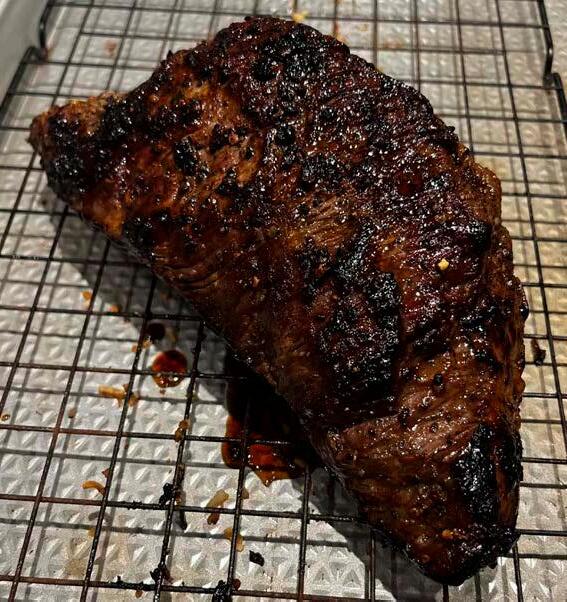
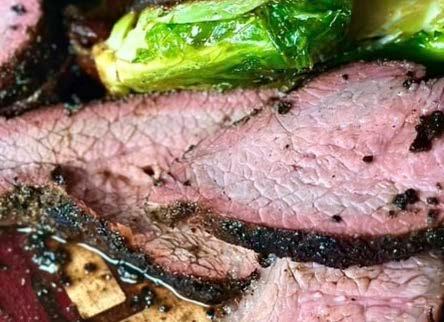
Step 5: When your roast gets to your target temperature (130-135 for medium rare or 140-145 for medium) pull it off and let it rest while you bring your smoker up to 400 degrees. Don’t stress too much about losing the heat in the roast. You already got it up to temperature, so you know it’s cooked. If it takes 10 minutes for your smoker to heat up, that’s ok.
Step 6: Sear the roast. My preference is to start with 1 minute each side and if it needs another 1 minute to develop a little more char that’s great, you can keep rotating it.
Step 4: Add the roast to your smoker and plan to let it cook for about 45 minutes before checking the internal temperature with a meat thermometer. You be the judge. If you are cooking a bigger roast, you might not need to check it for a full hour. When I check mine, I also like to flip them so that the roast gets hit with heat from all sides. This helps ensure even cooking.
Folsom Farms
Step 7: Take it in and let it rest under some aluminum foil. This is super important. You don’t want to cut into a steak straight off the grill. It will likely bleed out all its moisture and will make for an extremely dry bite! Plan for 5-10 minutes. Again, don’t worry about losing all the heat. It’s been on a hot grill, and it needs to settle.
Step 8: Slice against the grain and serve. Try to make slices that are about pencil width. Serve alongside your favorite sides and enjoy.
Tri-tip is sure to become a staple in your dinner rotations! Enjoy!
All of our cattle are homegrown on our farm in scenic Rexburg, Idaho. JD is a cattle veterinarian by trade and he and his team are caring for these animals from conception to product delivery. The humane treatment of our herd is of the utmost importance to us. Every measure is taken to ensure the health and wellbeing of the animals, each being selected for genetic excellence. www.folsomfarmbeef.com

If you have a recipe that you would like to feature in The Pot Roast section of Protein Producers, email us a protein.producers@pacdvms.com

